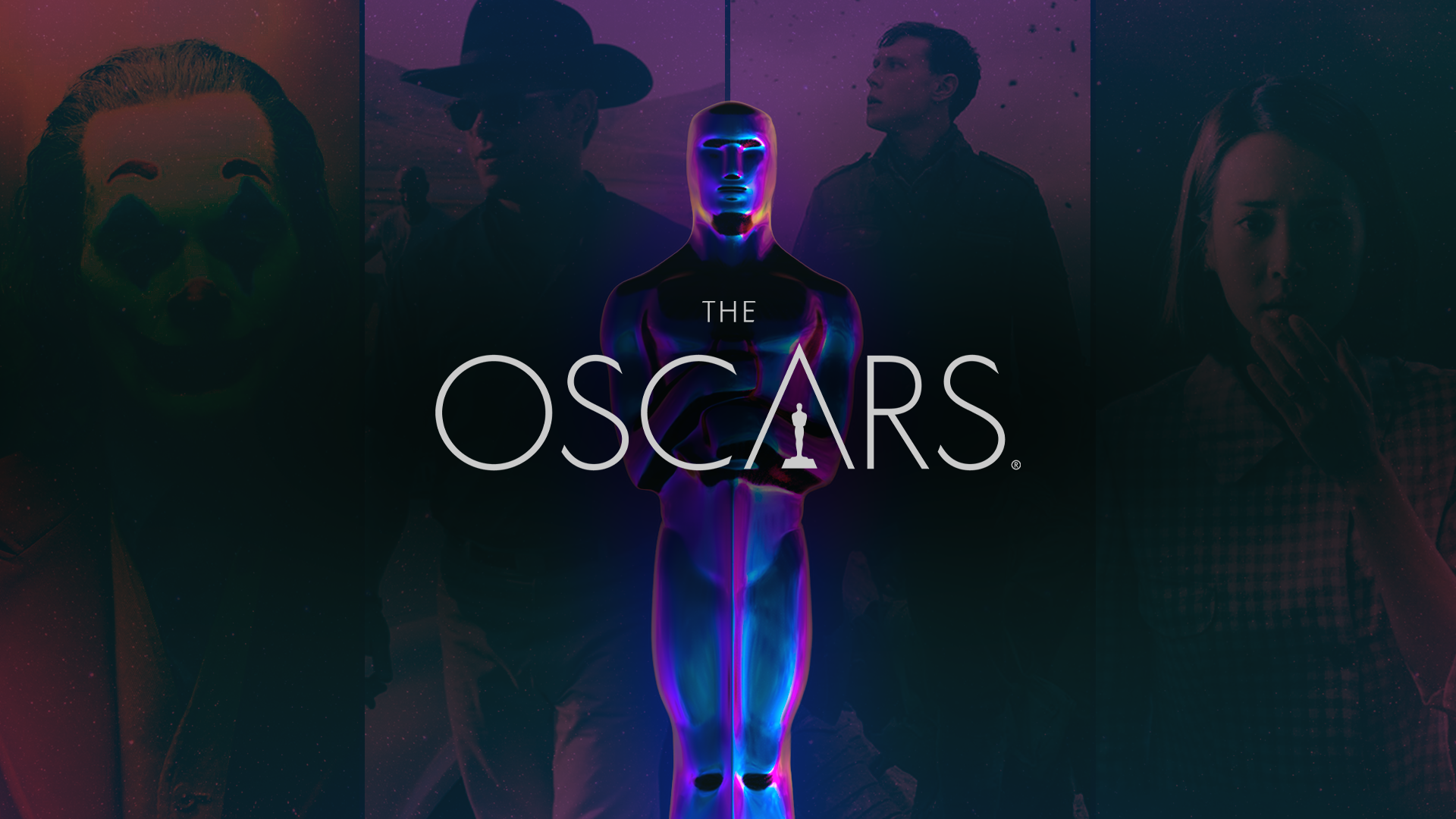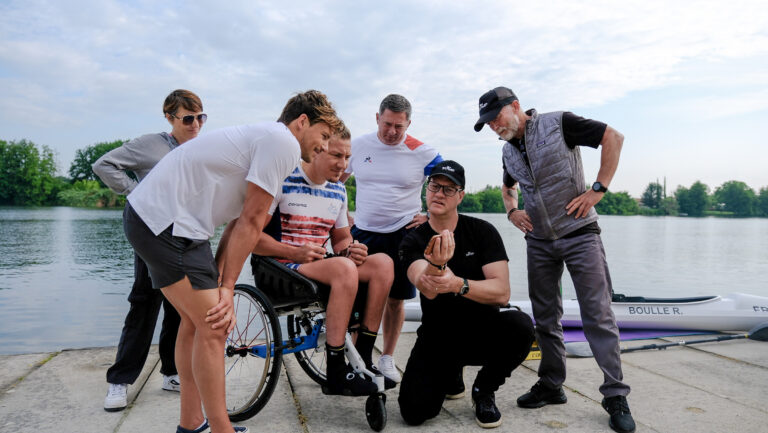For the past several years, high on the list of the most-read articles on the Frame.io Insider have been our workflow breakdowns of the Best Motion Picture and Best Film Editing nominees at the Oscars.
Beyond the fact that our readers appreciate the article, we love putting it together for you—it gives us a chance to examine how those working at the top of our industry do what they do.
We hope you’ll enjoy our third annual Oscar workflow roundup, as we take you deep into the technical nitty-gritty of each of the films that were honored at the 92nd Academy Awards.
Contents
And the nominees are…

By the numbers
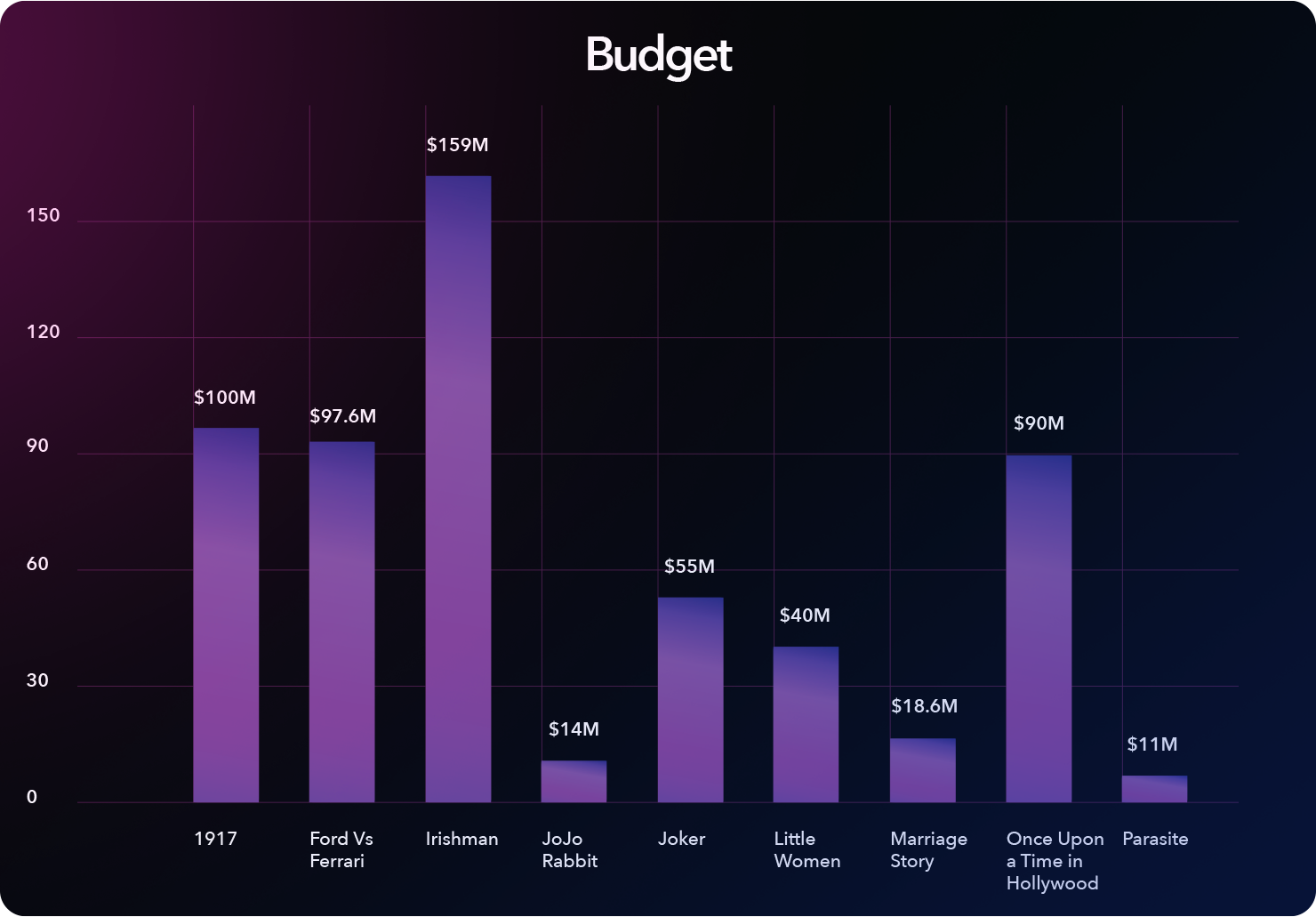
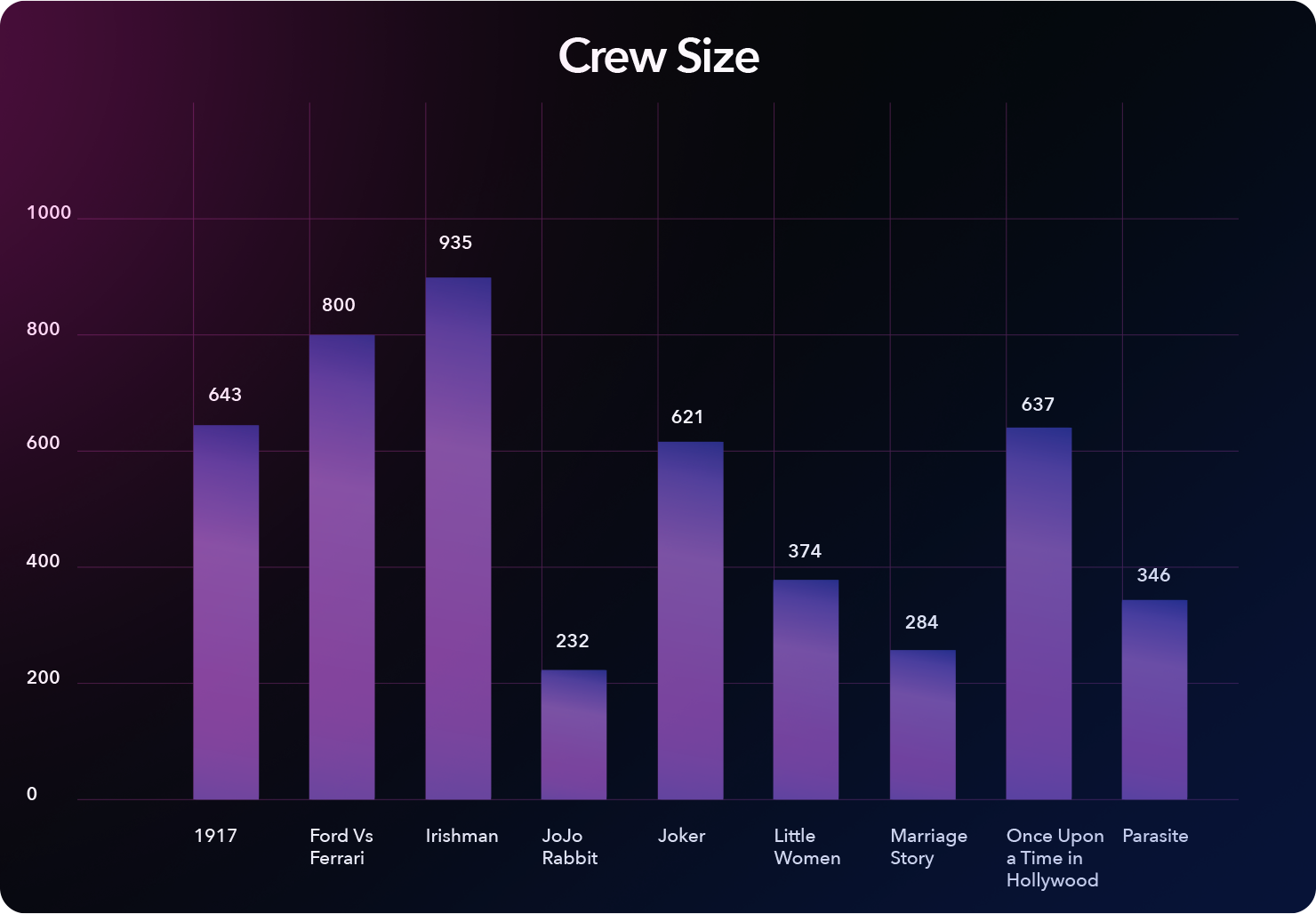
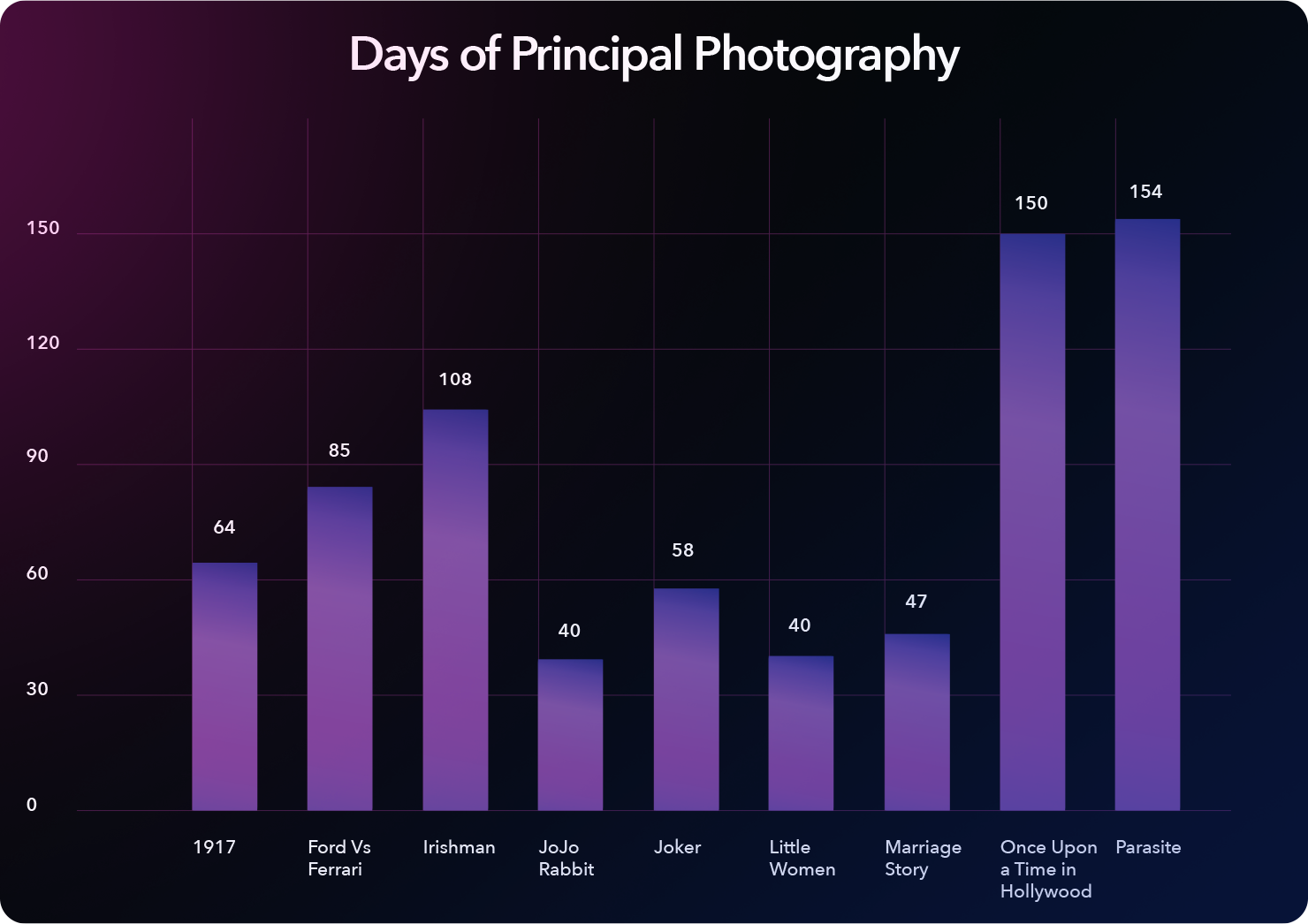
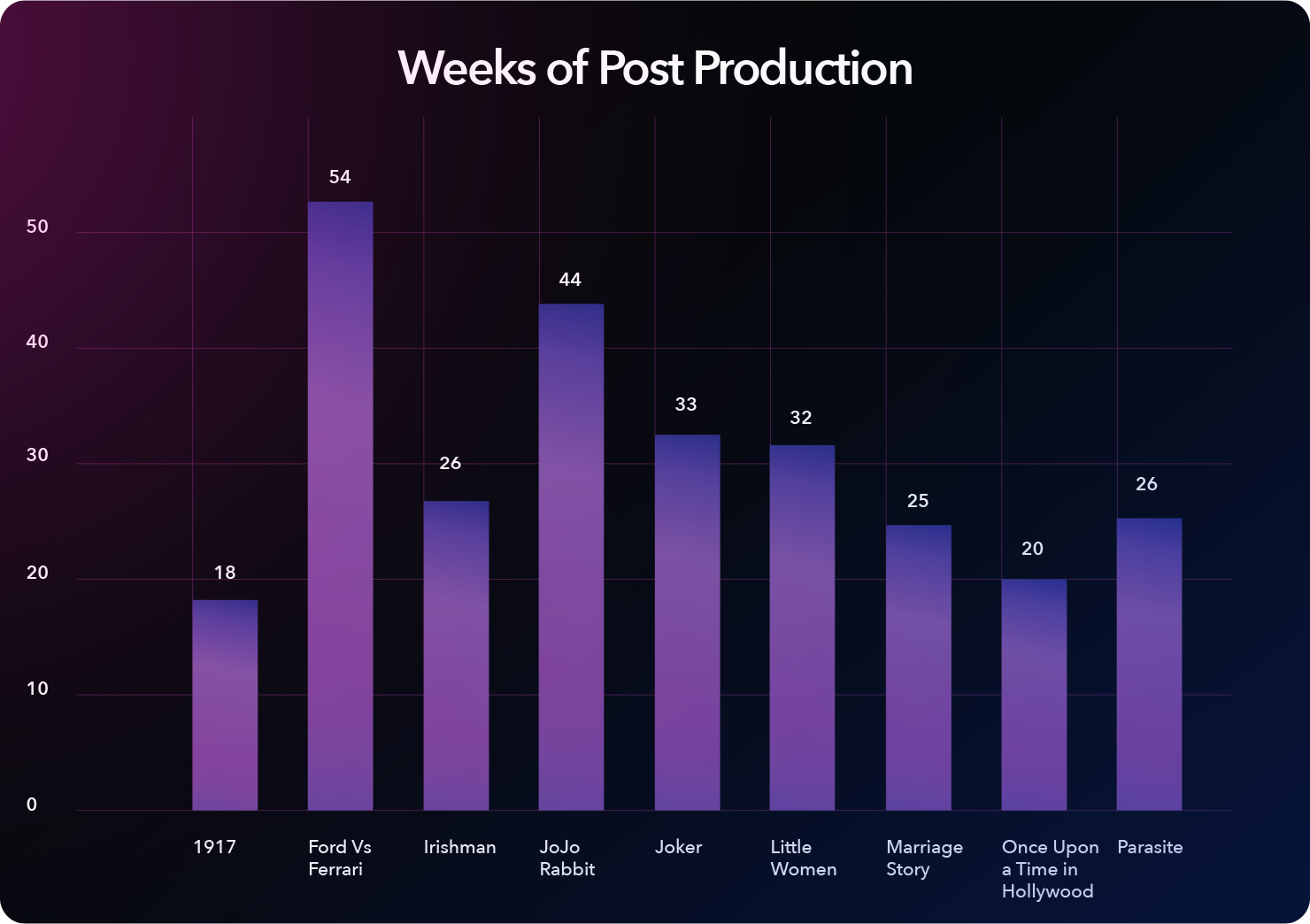
The size of The Irishman’s crew might surprise you, until you consider the significant visual effects required to achieve the de-aging effects used on the faces of Robert DeNiro, Al Pacino, and Joe Pesci. It’s also why The Irishman’s budget is the largest among the nominees.

Less of a surprise is the crew and budget size of Ford v Ferrari, given the scope of its centerpiece racing sequences, or the amount of work and money it took to create the elaborate faux single-shot techniques used to depict 1917’s war on screen.
And, as there are every year, we have films like Jojo Rabbit, Little Women, Parasite, and Marriage Story, which realize their more intimate stories with appropriately intimate crews and budgets.
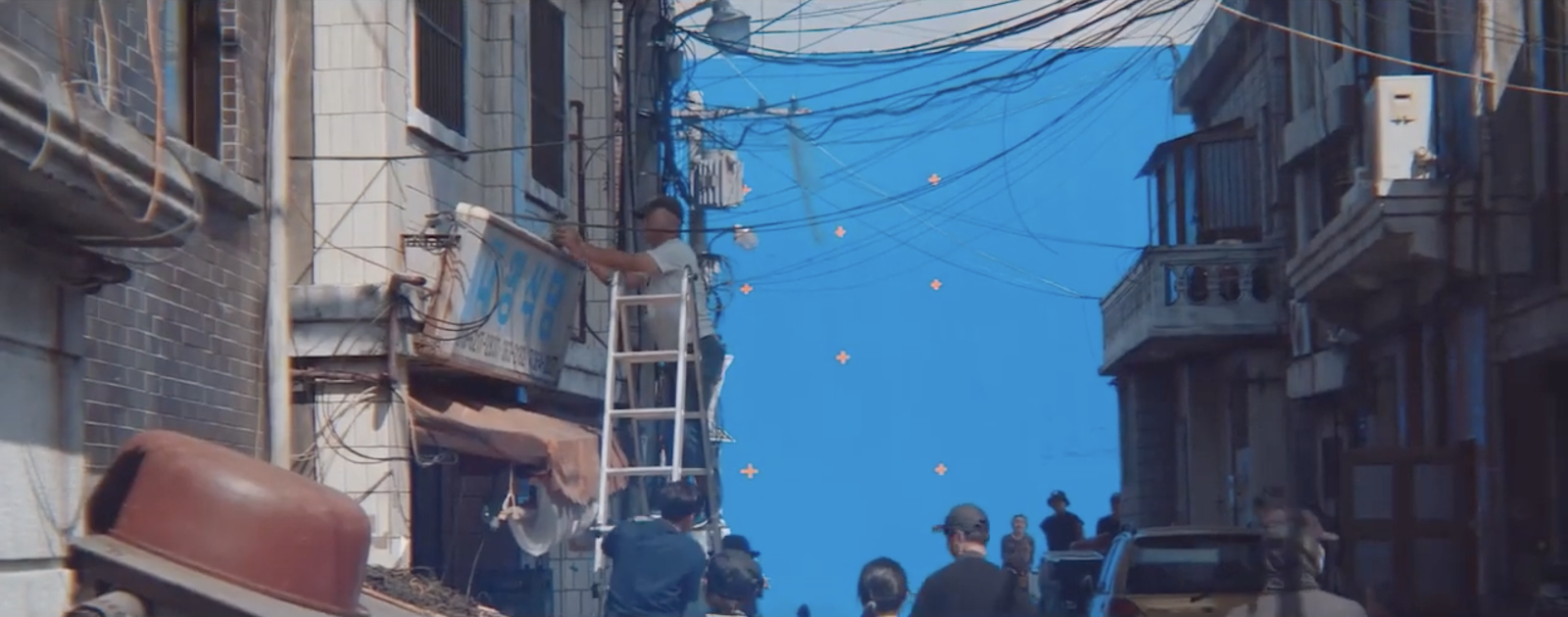
The common denominators
Critical and popular success don’t always overlap, but they did among this year’s nominees.
In terms of box office, JoJo Rabbit and Parasite are the only films not crossing the $100 million mark domestically (although Parasite reached it internationally).
Comic book-inspired Joker, not surprisingly, was the box office king among the contenders, racking up $334 million to date, with its closest competition—Once Upon a Time… in Hollywood with $141 million—making less than half that.
As for critical reception, almost all of the nominees scored over 80 percent on Rotten Tomatoes. Five of them even scored over 90 percent fresh (with Parasite scoring a mega-fresh 99 percent). The only outlier? Joker with 68 percent. (See? Critical and popular success don’t always overlap.)
The other commonality among the movies is that almost all of them are period pieces (except Parasite and Marriage Story) set around the Civil War, WWI, WWII, the 1960s, and the 1980s.
Atypically, there were few traditional biopics and true stories among the selected films, with The Irishman and Ford v Ferrari coming closest—although both took creative license in their approaches.
The majority of the nominated films were edited on Avid, commonly in DNx115. The rather unusual exceptions were Parasite, which Jinmo Yang edited on Final Cut Pro 7 (because he taught himself to use FCP in college), and The Irishman, on Lightworks, because Thelma Schoonmaker’s been using it since she cut Casino in 1995.
ARRI ALEXAs were the cameras of choice for most of the productions, though it’s worth noting that four of the nominees were actually shot on film (Once Upon a Time… in Hollywood, Marriage Story, Little Women, and the non-FX footage for The Irishman) to help capture the authenticity of the periods in which the movies were set and to preserve the richness and depth of the settings or skin tones.
VFX were essential to telling the story—and they did so invisibly. Among the usual suspects for Best Visual Effects (Star Wars: The Rise of Skywalker, Avengers: Endgame, and The Lion King) are two of this year’s Best Picture nominees.
The Irishman pocketed the VES’s (Visual Effects Society) highest honor for their de-aging work, while 1917 earned the BAFTA and the Oscar for their part in creating the illusion of a raging battle across a single, continuous shot using CG planes and tanks, digital actors and water, and more—without the benefit of cuts to help cheat the effects.

In a similar way, Parasite used much the same approach. Bong Joon Ho’s 960-shot film contained 400 visual effects shots to both “stitch” together different takes from different actors within a setup as well as to create the elaborate illusion of the mansion.
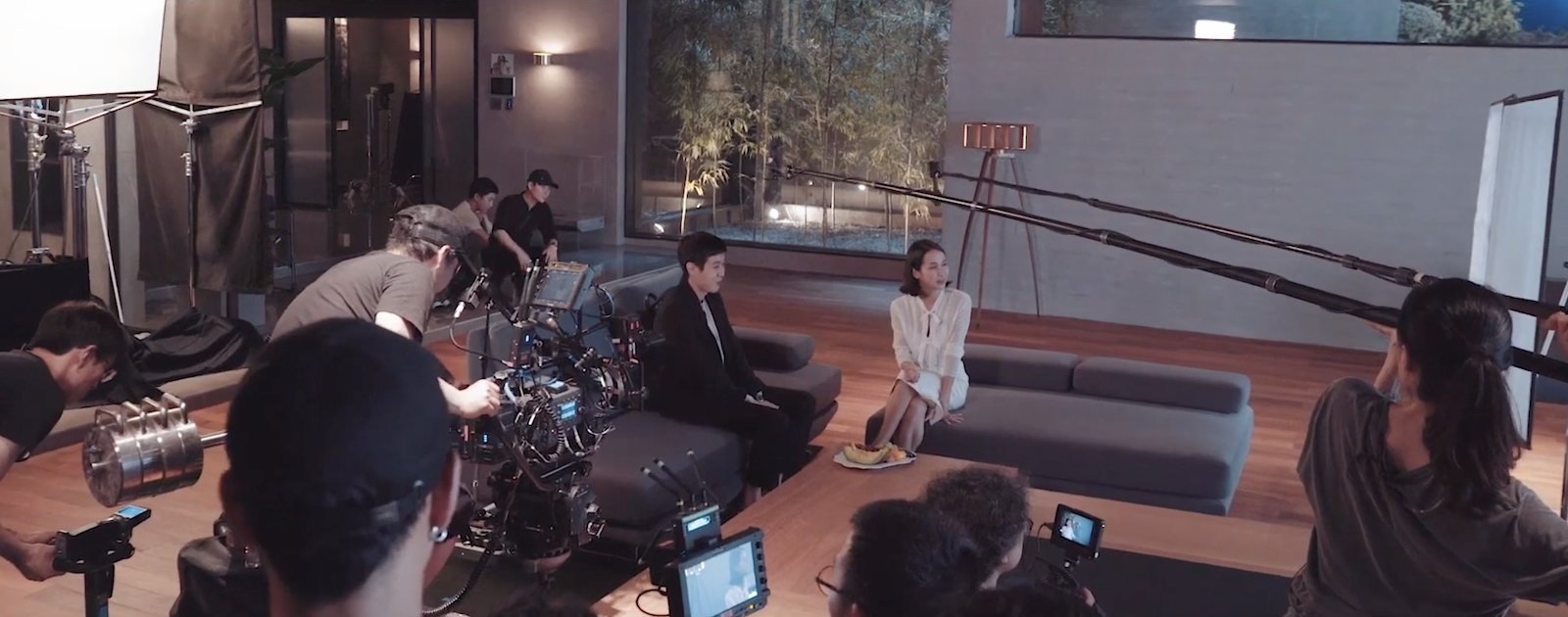
Little Women relied on more than 500 VFX shots to replicate the vintage setting and achieve some of the more complicated sequences.

The legendary John Dykstra handled the VFX to make Once Upon a Time…in Hollywood feel like an authentic period piece by creating the drive-in location through miniatures and handling the Steve McQueen The Great Escape sequence by shooting against green screen in a parking lot—and much more.
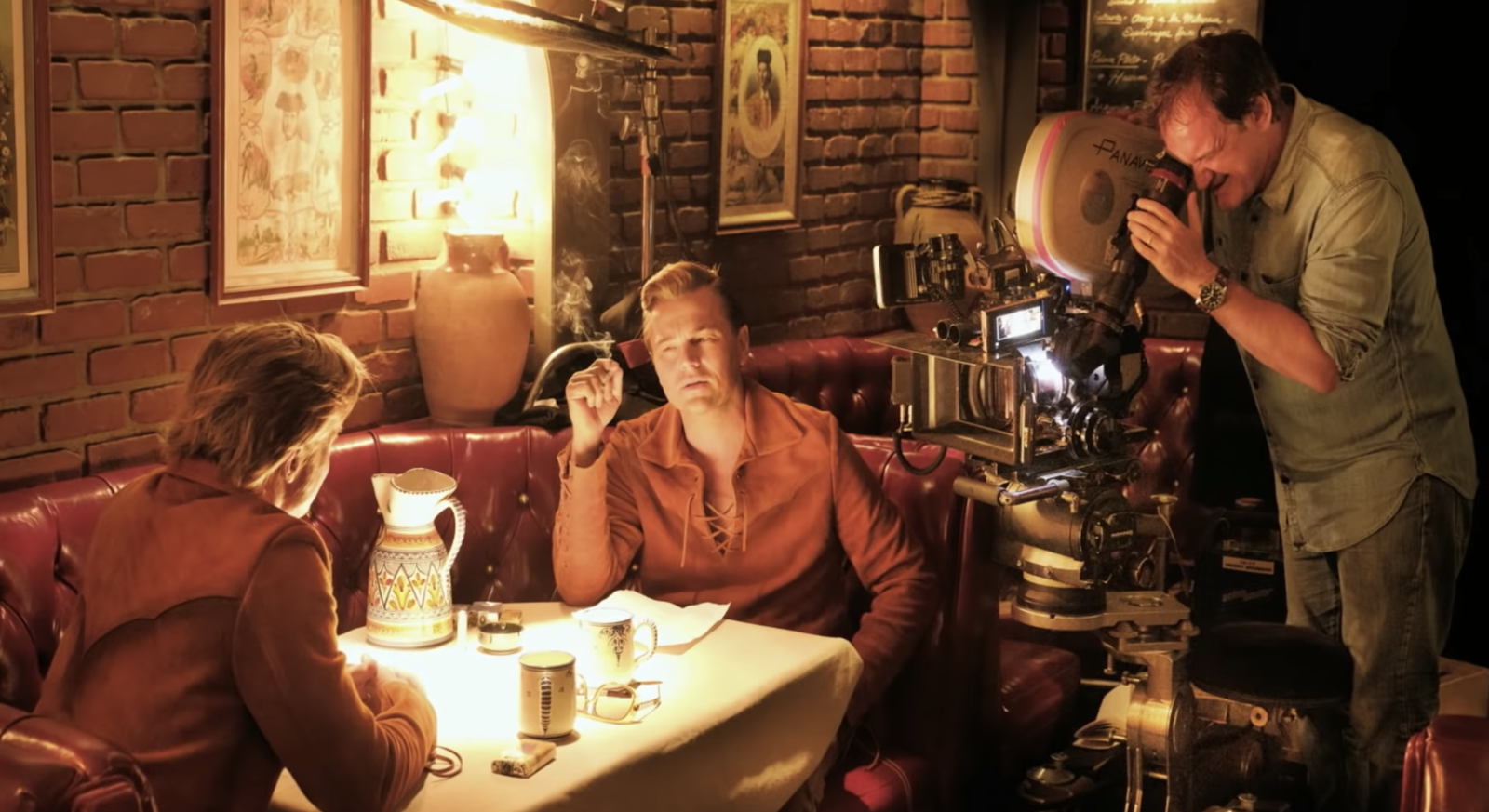
And with a massive 1100 VFX-shot count, Ford v Ferrari relied on invisible effects not only for the period-accurate race sequences, but also to build out the Ford factory interiors, replace heads on stunt drivers, and create CG dashboards to accommodate “impossible” camera angles.
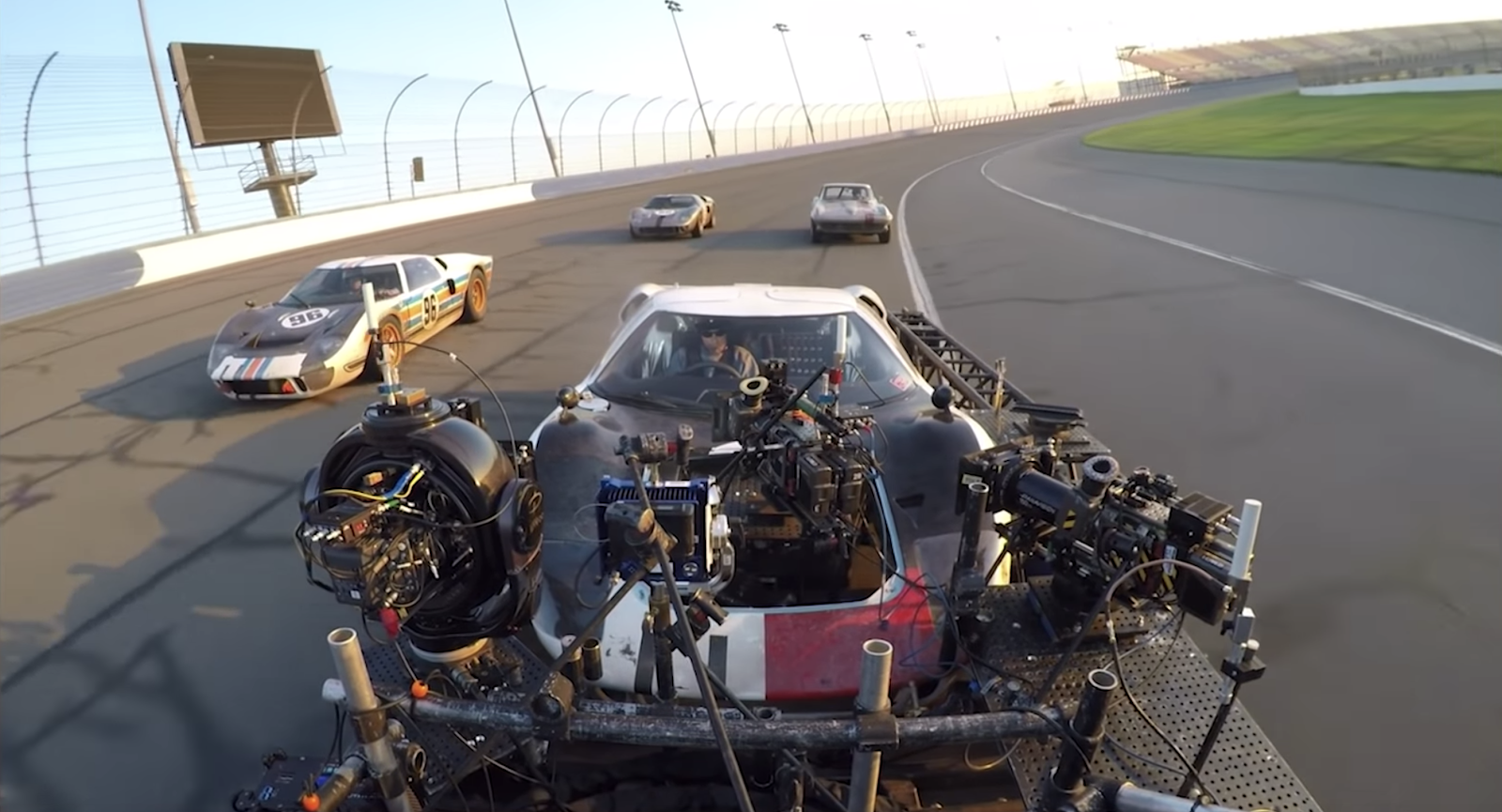
Lastly, as is often the case at the Oscar level, many of the director-editor teams have previously worked together. Some have collaborated for decades (Martin Scorsese and Thelma Schoonmaker), others for several years (Noah Baumbach and Jennifer Lame, Bong Joon Ho and Jinmo Yang, Quentin Tarantino and Fred Raskin, James Mangold and Michael McCusker) and some were teams with a relatively fresh coat of paint (Greta Gerwig and Nick Houy). But all, clearly, were comfortable enough with each other to yield work that’s worthy of award recognition.
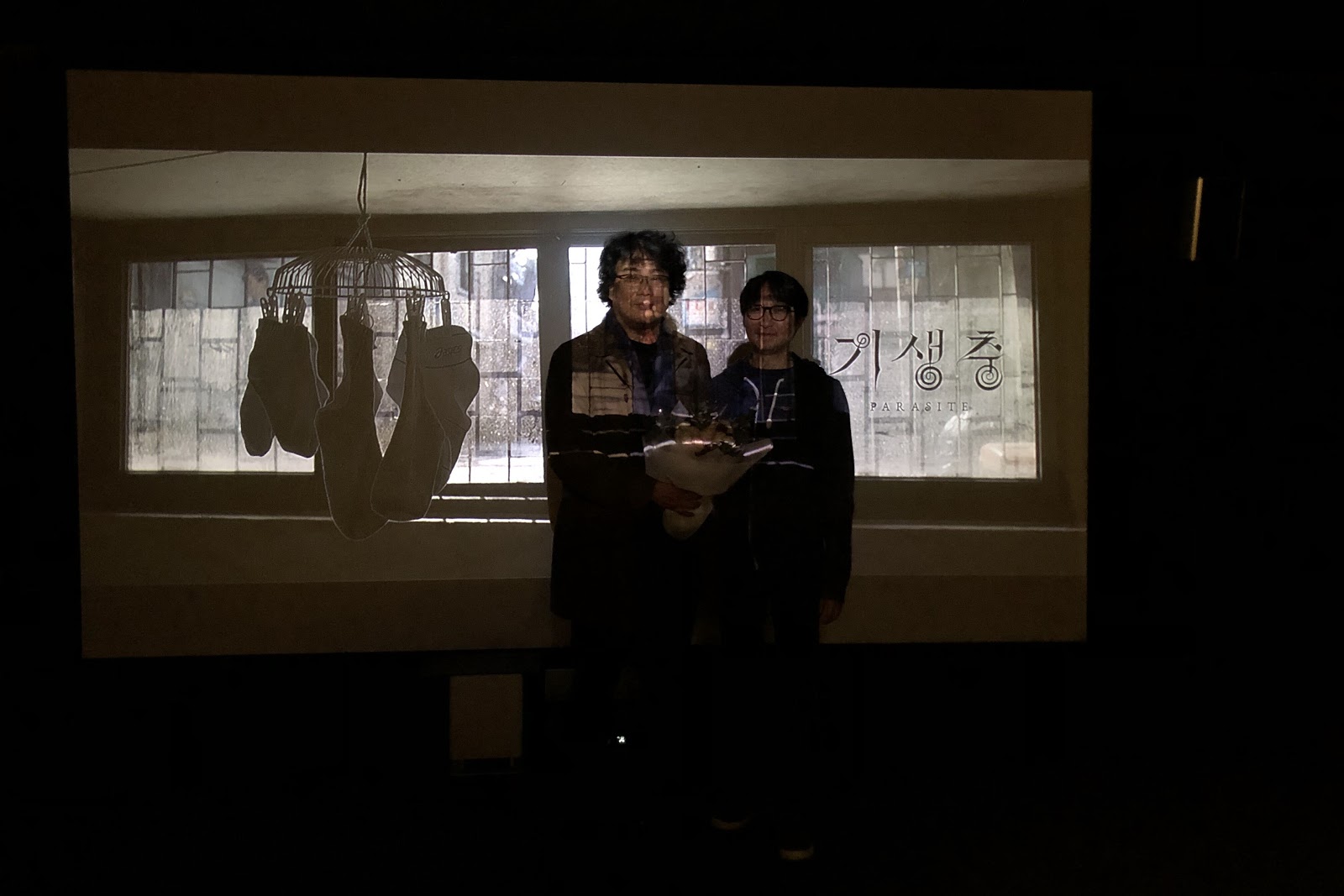
Without further ado, let’s dive into the individual films.
The Big Budget Heavyweights
Four of the five nominees this year had budgets over $90 million, largely driven by A-list directors (Sam Mendes, Quentin Tarantino, Martin Scorsese, and James Mangold) who can justify it, and whose A-list visions require it.
1917
Sam Mendes’s much-discussed mission to make his WWI film, 1917, appear as if it were a single shot happening in real-time, called for a slightly different kind of editorial workflow during production. “The biggest challenge was the time crunch and pressure that came with the nature of how the film was shot,” says first assistant editor, Pearce Roemer.
He explains further: “The footage that we received first thing in the morning needed to be cleared and reviewed as quickly as possible before filming for the day could commence. Editor Lee Smith’s choice of take urgently needed to be decided on so that the crew knew what the tone and technical lineup for the next shot was. The continuity between our ‘stitch’ points was paramount, and relaying the take choice to the set allowed the crew to lineup as accurately as possible to what was to be used in the actual cut of the movie.”
Throughout the 64-day shoot, Smith went to Company 3 in London every morning to receive the dailies from legendary cinematographer Roger Deakins, who has swept awards season with the ASC, BAFTA, and Academy awards for his work on the film.
Deakins shot in IMAX on ARRI ALEXA Mini LF cameras in ARRIRAW (4.5K) with Open Gate, recorded to Sony SxS Pro Plus cards with 28 minutes of recording time per card.
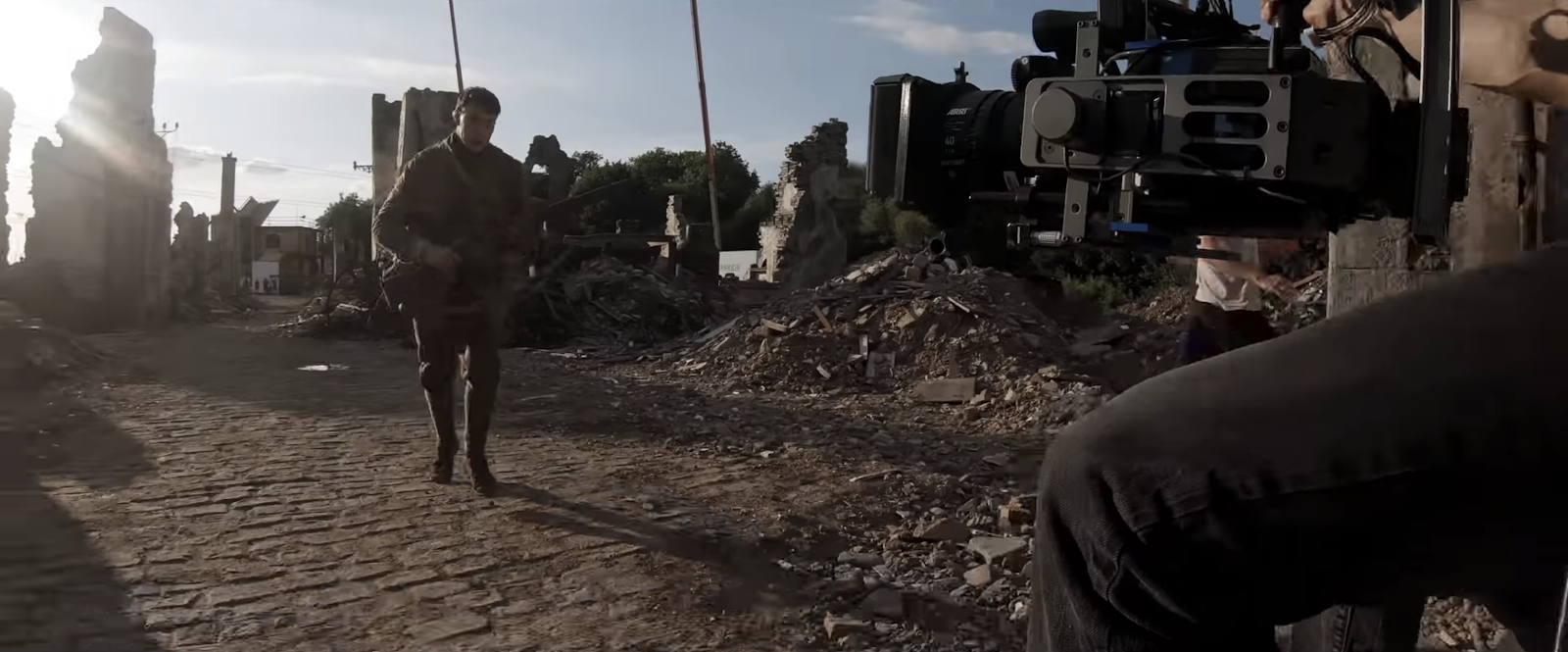
Smith and Roemer viewed the footage in full-resolution, along with dailies colorist James Slattery. By that time, the second assistant editor had also already received drives from production, downloaded them to the render system, and ingested them for the cutting room.
With that all in place, Smith and Roemer worked their way through the footage. “Lee and I would view everything as quickly and efficiently as possible, looking out for any errors that might not be noticeable on the Avid offline. We then would return to the cutting room and begin the process of trying to make Lee’s select (or selects) work,” says Roemer.
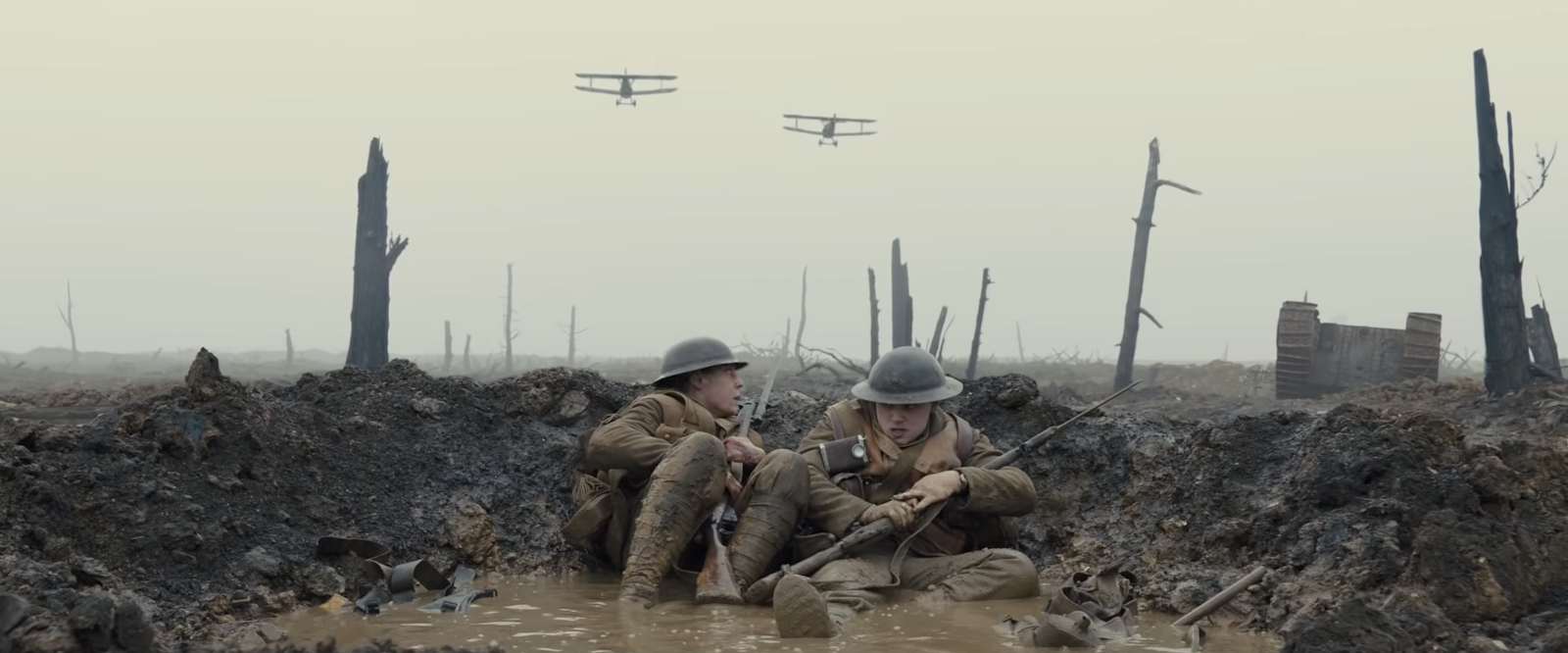
“Meanwhile, I would also receive PIX versions of the dailies each morning. I would then have to PIX Sam’s circle takes to pre-approved groups of people on production so that they could have some sort of reference while editorial reviewed. Lastly, Sam and Roger both had an EVUE system where each day they received dailies at a higher resolution than they otherwise would be able to see on the PIX files.”
In the cutting room itself, the team worked on four Avids running on Mac Pros (2013 model), DNx115 HD on a NEXIS for storage. The full team was made up of Smith and Roemer, Gemma Bourne (second assistant), Myles Robey (VFX editor), and a trainee (Alex Waite). Peter Clarke was the music editor, and assistant VFX editor, Deborah Kavanagh, came on when production was nearly finished.
Once principal photography wrapped, post-production took ten weeks for the director’s cut, three weeks to lock the picture, and then five weeks to mix, conform, source, and ship the movie. The result? Given that it’s already collected BAFTAs for Best Director and Best Film, it’s a heavy favorite for Oscar wins.
Ford v Ferrari
Watch the 24 Hours of Le Mans and what looks like dangerous chaos is something that is, in fact, controlled by supremely skilled professionals.
The racing sequences in Ford v Ferrari were no different, requiring the same level of skill and effort to recreate the historic 1966 race on which the movie is based.

That’s why lead editor Michael McCusker began working on Ford v Ferrari two and a half months before principal photography started, so he could previs the climactic sequence that would inevitably produce the vast quantity of footage he and co-editor Andrew Buckland would have to tame—and what would ultimately lead to their Oscar-winning teamwork.
Production began in July 2018 and lasted 85 days, with cinematographer Phedon Papamichael (in his fifth collaboration with Mangold) shooting in 2.39:1 on the ARRI ALEXA LF in ARRIRAW (4.5K), using customized Panavision lenses to give the look of vintage Panavision C lenses to help suggest the look of the period.
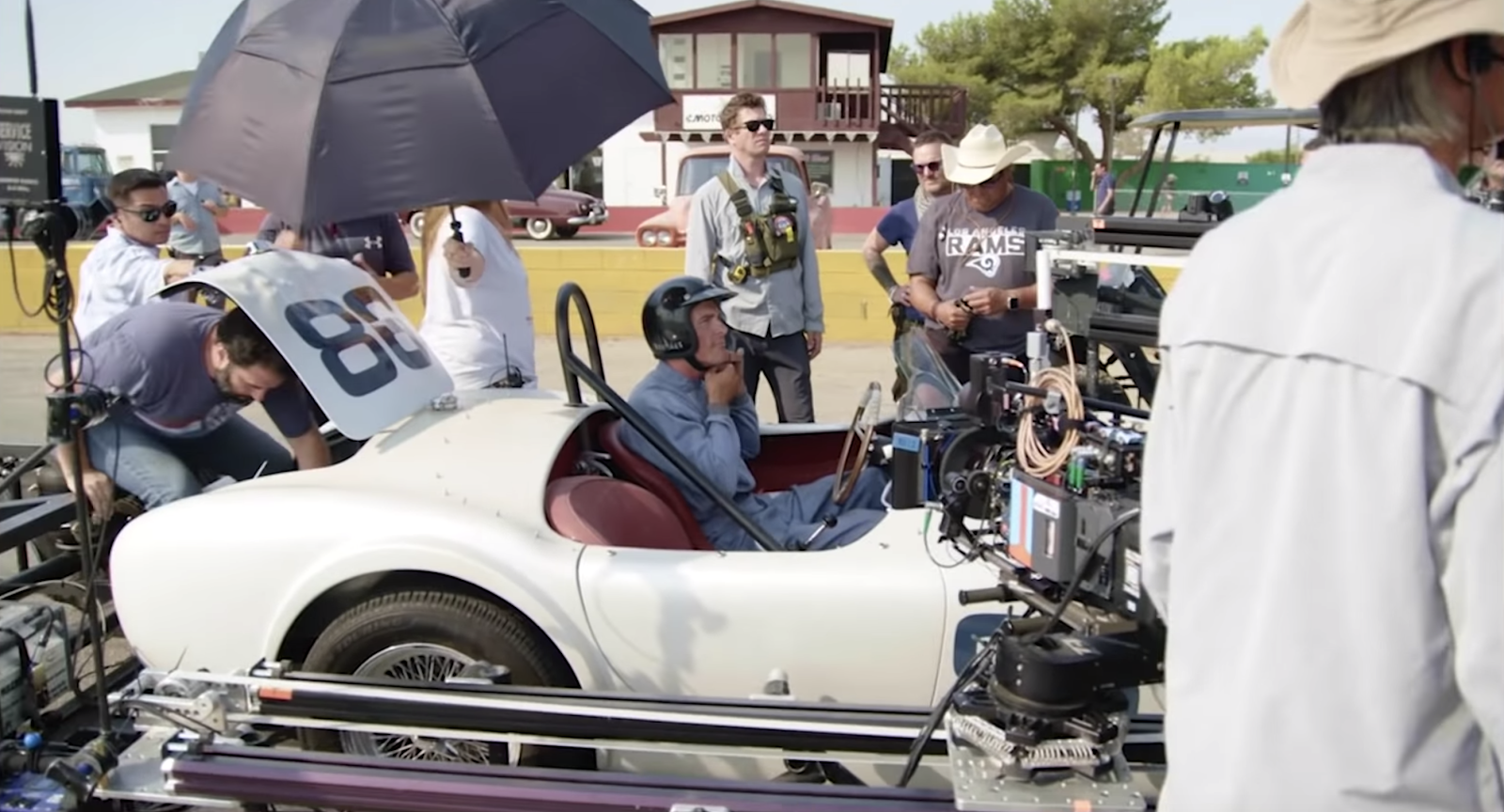
McCusker organizes his dailies himself in a somewhat atypical way. Rather than having assistants create bins for him or creating select reels, he picks a scene, looks at the last take of every set-up, and then creates bin structures that break down footage by screen direction, scene beats, shot size, and more—basing his choices on the demands of the particular scene.
Why does he avoid select reels? He feels that once he puts them into a timeline, tunnel vision can restrict his ability to reconsider what might still be lurking in the dailies and could work well for a scene.
Ford v Ferrari presented abundant challenges for the editorial team beyond the racing sequences. Multiple storylines, balancing the action with the subtext of the story, and a heavy VFX load that needed to work in tandem with editorial all contributed to the complexity of the process.
After the previz phase, editorial worked during principal photography, which wrapped in November 2018, and had the first cut ready for the studio to screen in February 2019. Editor Dirk Westervelt was called in to help lighten the team’s load during the post process.
And then there was the sound. Ford v Ferrari has deservedly won the sound editing Oscar, along with the top honors at the Motion Picture Sound Editors and Cinema Audio Society in their respective categories.
In many cases, the picture editors cut the race sequences without sound initially, and then turned them over to supervising sound editor Don Sylvester, who added the many different audio tracks, including recordings of vintage race cars.
The final mix was done in Dolby Atmos, to fully immerse the audience in the grueling (and thrilling) racing experience.
The Irishman
Robert DeNiro. Al Pacino. Joe Pesci. What cinema buff wasn’t excited by the prospect of those three acting giants coming together to work with Martin Scorsese again in The Irishman?
But for editors and the creative craft-minded among us, the prospect of another film by legendary editor Thelma Schoonmaker was equally exciting.
What did she have to work with this time around? Cinematographer and third-time Scorsese collaborator Rodrigo Prieto shot slightly more than half of the movie in 3-perf Super 35mm on Kodak Vision3 250D 5207 and Vision3 500T 5219 on Arricam LT and ST cameras, using the different stocks to capture the looks of the many decades depicted in the movie.

Prieto worked closely with Harbor Picture Company to develop LUTs that would further enhance the looks he wanted to achieve to mark the passage of time. With the number of angles involved for complex dialogue scenes, it’s been reported that there were some setups involving as many as nine cameras.
The team at Industrial Light & Magic did the extensive de-aging work on DeNiro, Pesci, and Pacino, which necessitated shooting on a three-camera rig dubbed “the three-headed monster” with a RED Helium as the main camera capturing in Redcode RAW (8K), flanked by two ARRI ALEXA IRs capturing in ARRIRAW 3.4K.
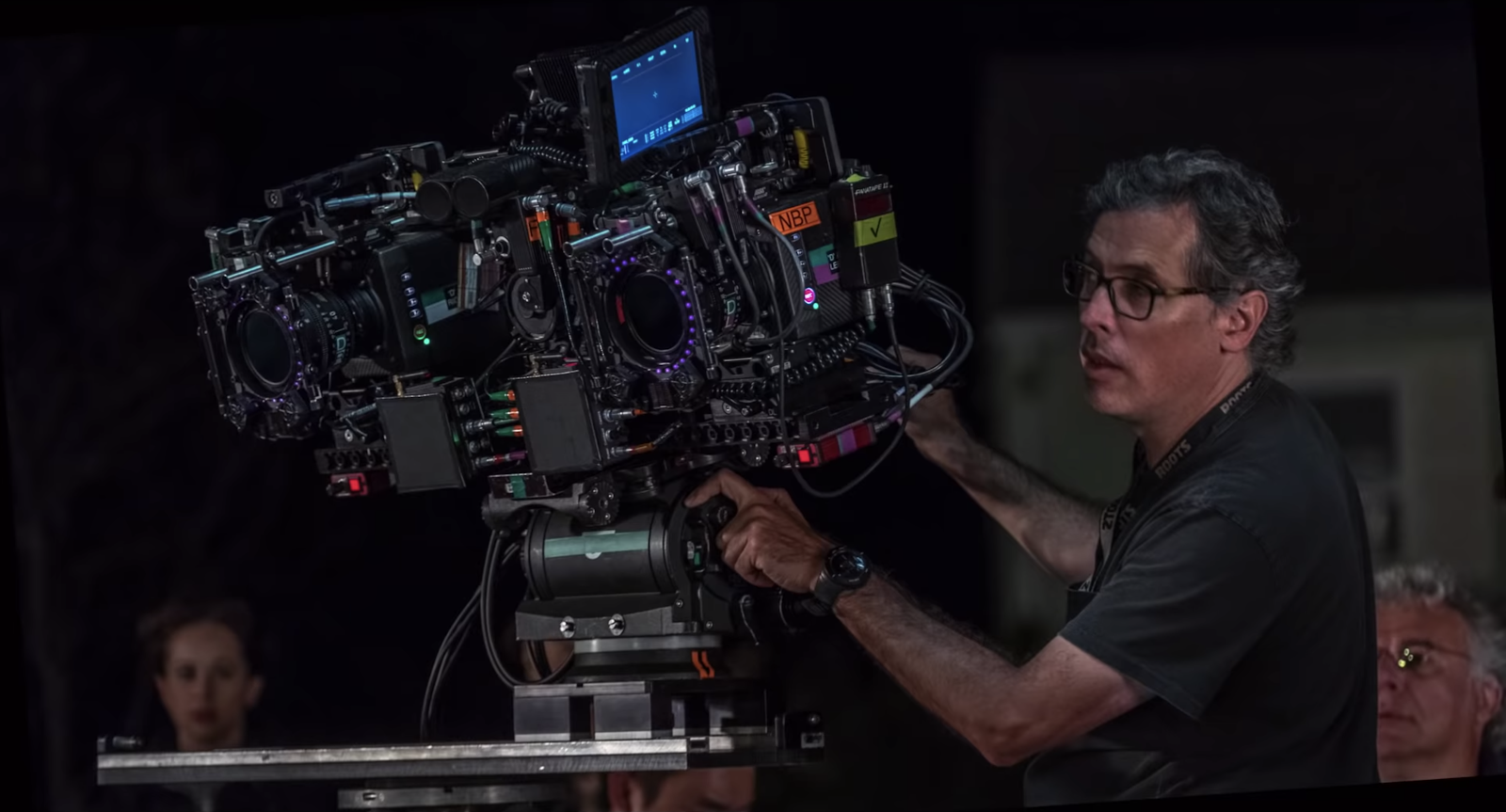
No less a challenge than the de-aging process itself was ensuring that all the digitally captured footage matched the film stocks in terms of color and grain structure to create a consistent look for each decade.
Principal photography lasted 108 days, during which Schoonmaker watched dailies as they came in, viewing them in Lightworks, making detailed notes, and looking for any issues that Scorsese might need to be aware of on the set. The process of making selects, however, is something she does with Scorsese, viewing them on a large monitor or in a screening room either in the evening or on weekends.
Based on those sessions, Schoonmaker built a timeline of selects, ranked in order of preference. At the end of the shoot, she made her assembly, and continued to work closely with Scorsese during post-production.
Throughout that process, associate editor Scott Brock helped her with temp mixes. VFX editors Red Charyszyn and Alex Gurvits were responsible for sending turnovers to ILM for the VFX work.
Scorsese and Schoonmaker spent several months editing the film to its final 3.5 hour running time. Once the picture was locked, ILM spent seven months on the digital de-aging.
We’d be remiss not to mention Schoonmaker’s unusual choice of NLEs before moving on. First using Lightworks on Casino, Schoonmaker took to it initially because the controller resembled those on her flatbed editor.
Another factor, and one that remains true for her, is that she finds it not only fast, efficient and intuitive, but appreciates its sync reference systems. It’s another example of the tools serving, rather than making, the editor—as evidenced by Schoonmaker’s earning two of her three Oscars while using Lightworks.
Once Upon a Time… in Hollywood
Quentin Tarantino’s love for shooting on film is well known at this point. So, it’s no surprise that he chose the format for his love letter to the movies, Once Upon a Time…in Hollywood.
Cinematographer and longtime Tarantino collaborator Robert Richardson shot primarily on 35mm Kodak Vision3 200T 5213 and 500T 5219 at 2.39:1 aspect ratio, using 16mm and 8mm at 1.33:1 for the vintage television sequences. The camera package included Panavision Panaflex Millennium XL2, Arriflex 435, Aaton A-Minima, and Bolex.

Much of Richardson’s challenge was to nail the look during principal photography without the benefit of checking what he’d shot on set. Production design, lighting, and camera movement were key to accurately capturing Tarantino’s vision. Later on, the challenge would be to give each of the different periods a look that was authentic to the time and format.
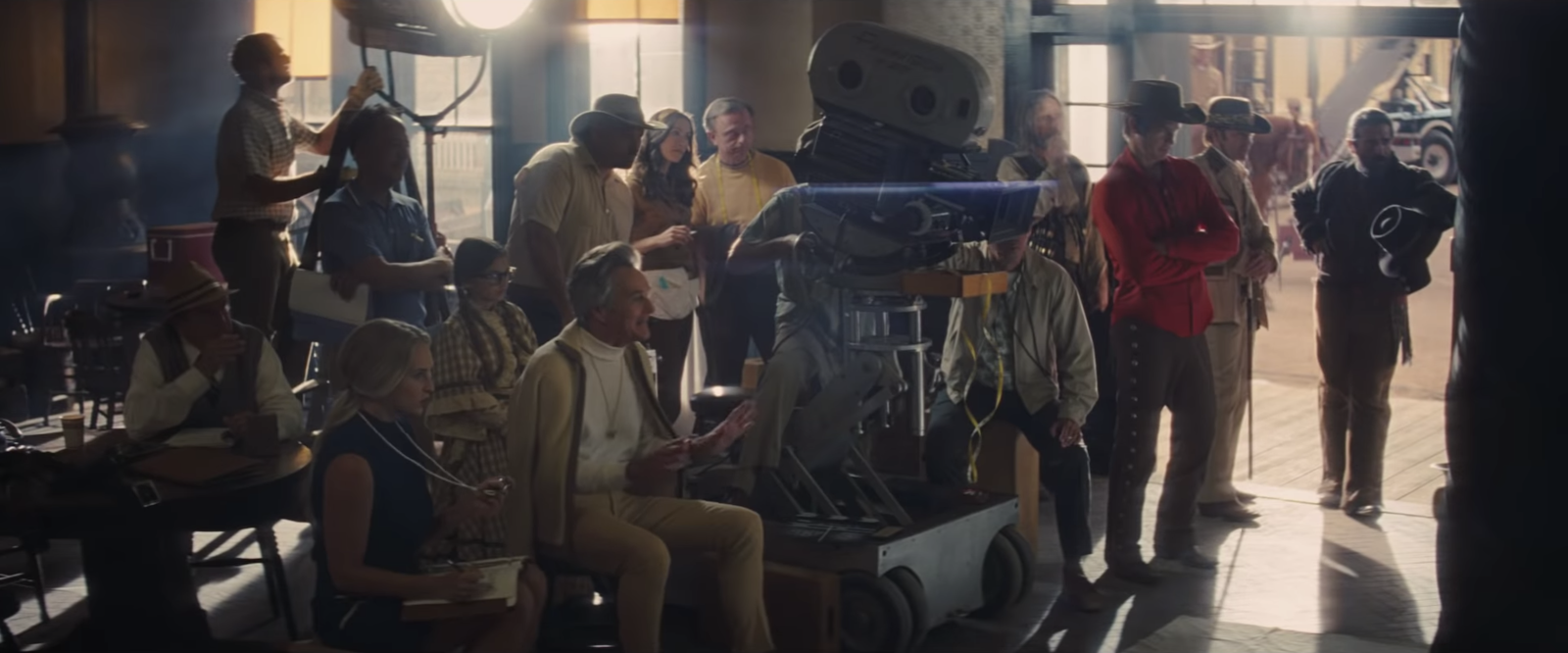
For example, custom color corrections previously developed for The Hateful Eight were applied for the spaghetti western sequences, while what was intended to take place in the movie present of the 1960s remained richly colorful and saturated for the magical, idealized fairytale look.
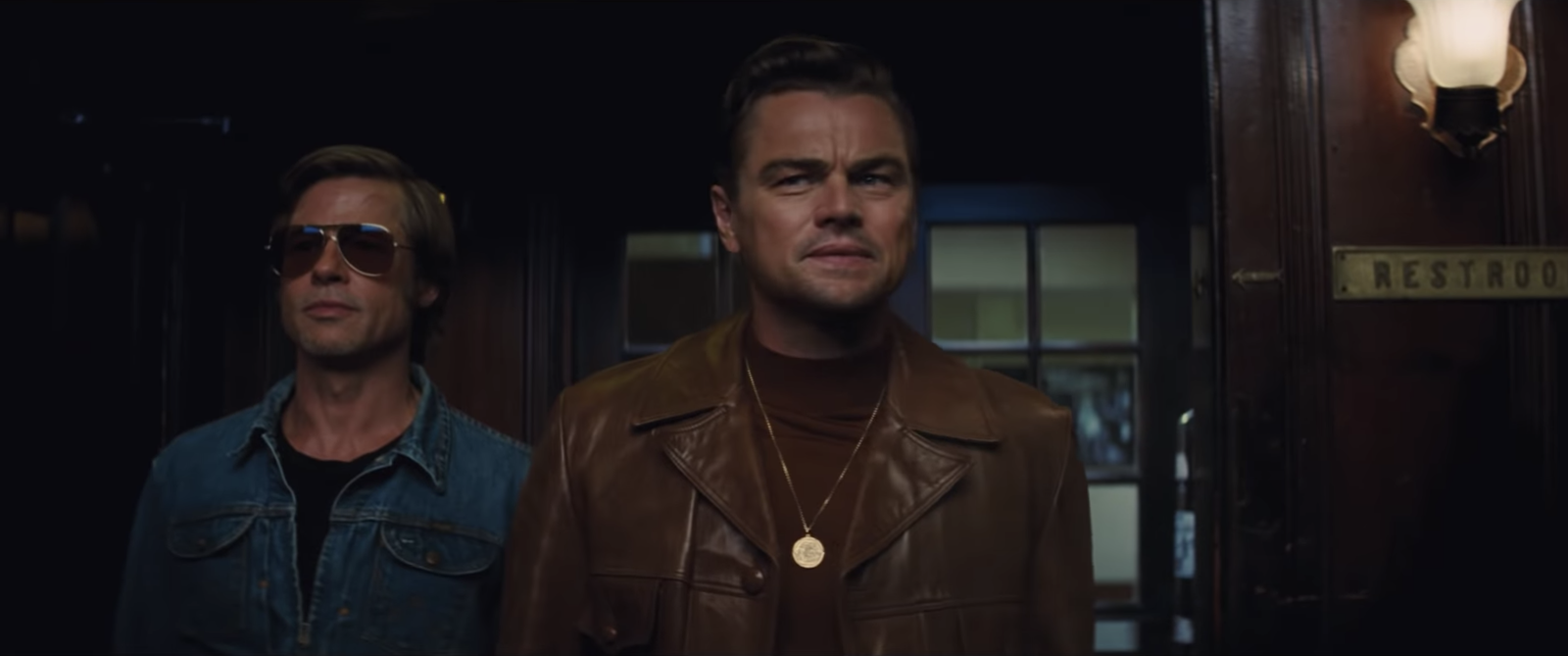
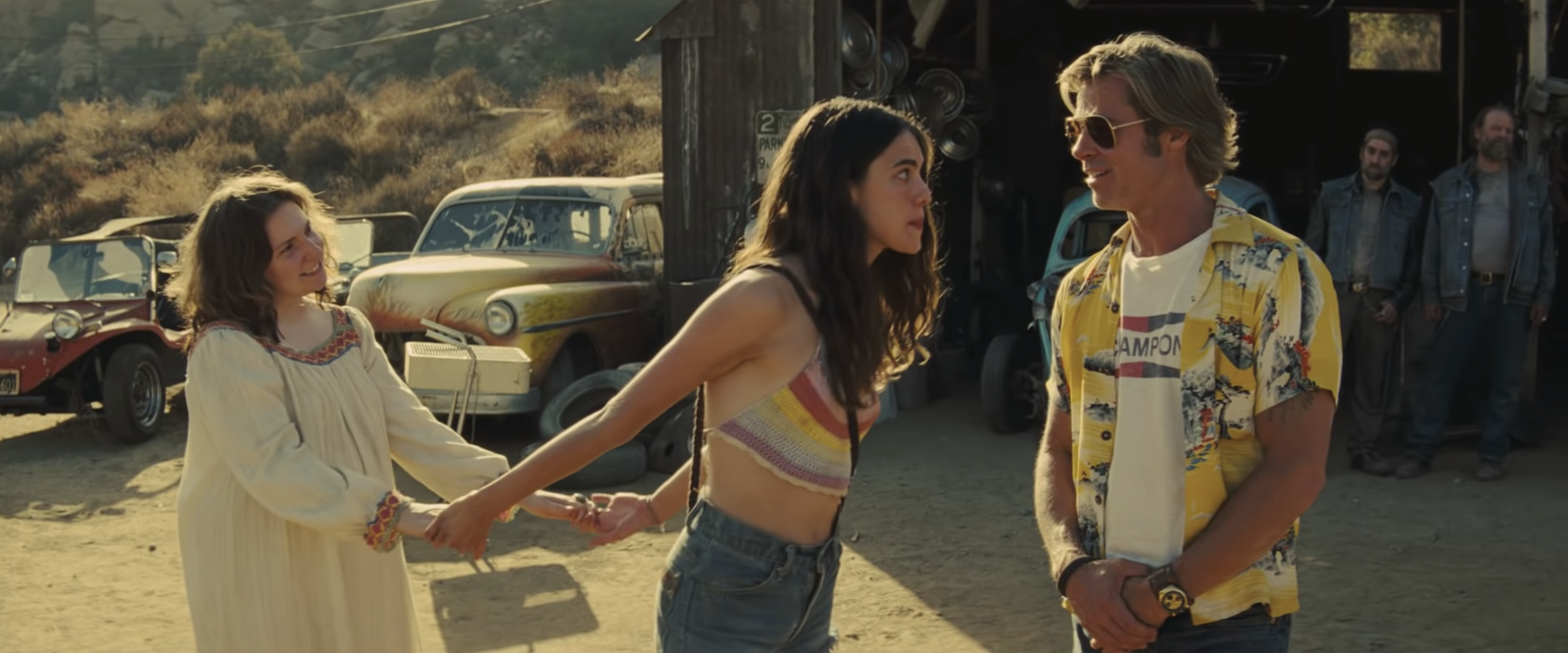
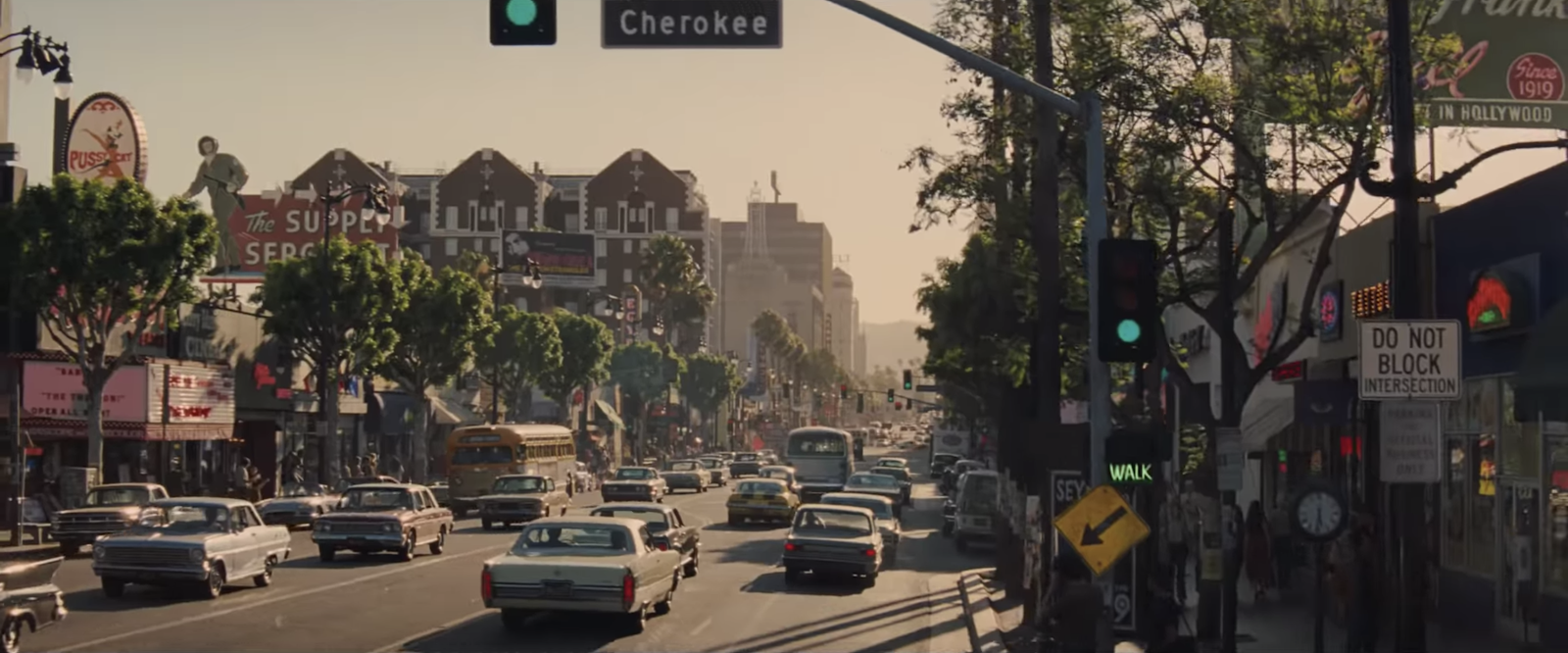
Getting dailies from a film-based workflow is obviously a slower process. Every day after production, FotoKem processed the negative and printed dailies so Tarantino could keep a film version of the cut-in-progress for screening. Dailies and prints were done on Vision 2383, with the final film-out on Vision3 2254.
Fotokem also did 4K scans of the negative using a Scanity for the eventual DI. “At that point the Avid team received MXF files, and our film team received their workprint,” says first assistant editor (Avid), Chris Tonick, who also pulled double duty as a VFX editor.
Tonick was responsible for helping to get dailies prepared, ingested into Avid ( DNx115 at 1920×1080), and organized into bins. The assistants put together daily rolls and kept a FileMakerPro codebook to create screening notes—about six takes per page—labeled with scene and take numbers, as well as the respective camera lenses.
When Once Upon a Time…in Hollywood moved into post-production after five months of principal photography, the editing team was led by Fred Raskin, along with Tonick, Brit DeLillo (second assistant editor, Avid), Alana Feldman (post PA), William Fletcher (first assistant editor, film) and Andrew Blustain (second assistant editor, film).
The editing team’s hardware set up was three Mac Pros (2013 models) as their primary systems, a Mac Mini for the film team to use, and NEXIS storage.
It’s worth noting, however, that even though the movie was edited in Avid, whenever a scene was at a point where Tarantino wanted to watch the workprint, Tonick turned over lists to the film assistant editors to conform the film print.
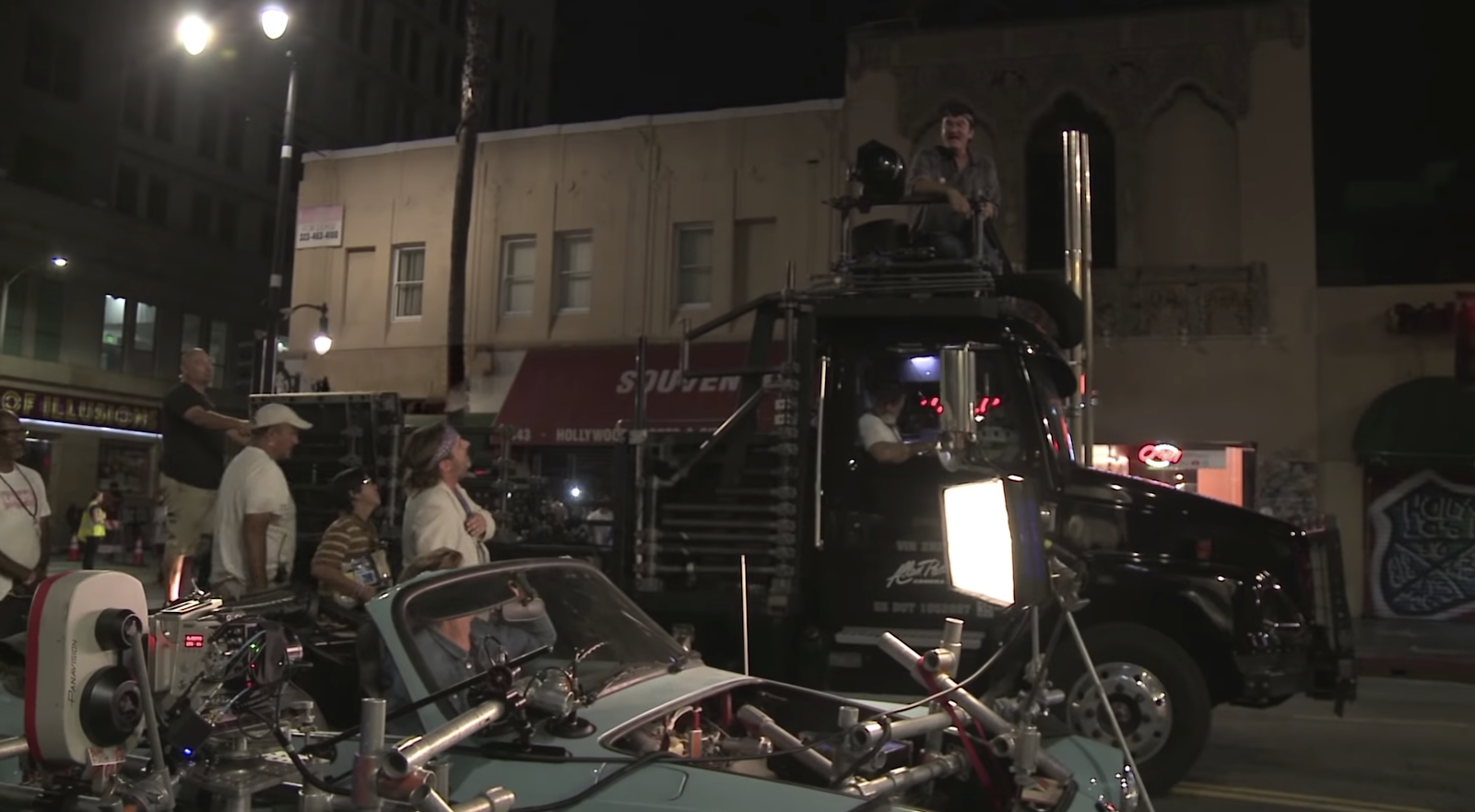
Avid was used for screening only when time was a factor. “There’s at least a one day lag time,” says Tonick. “So we were definitely forced to screen digitally sometimes when we needed to watch it right away.”
The editing began in January 2019 after the holiday hiatus, and the first cut was screened for producers by March 2019. After that, there was an additional month of tweaking before a print had to be prepared for the movie’s premiere at the Cannes Film Festival, where it started generating the rave reviews that would follow it all the way into Oscar season.
The Medium Budget, Unconventional Adaptations
Further down the budget scale, we find Todd Phillips’ Joker ($55 million) and Greta Gerwig’s Little Women ($40 million), which share an unexpected commonality: they’re both new takes on familiar material.
Little Women has been adapted several times, both for film and television, yet Gerwig’s dual timelines brings something new to the story.
And with Joker, Phillips took us far afield of how we’re used to seeing the Clown Prince of Crime by viewing him through a lens influenced by Taxi Driver and The King of Comedy.
Joker
When we spoke with editor Jeff Groth for our deep dive on the making of Joker, he shared with us that the movie was shot using ALEXA 65, ALEXA LF, and ALEXA Mini cameras, in ARRIRAW 4K at 1.85:1 aspect ratio. The resolution varied from camera to camera, but they were all shot Open Gate, with the 3967×2160 portion extracted. They edited in Avid MC v8.11 with DNx115 at 1920×1080 (letterboxed) and NEXIS storage.
His long-standing collaboration with writer-director Todd Philipps meant he read the script long before the roughly four-month production began, and had a firm understanding of the project before cameras rolled.
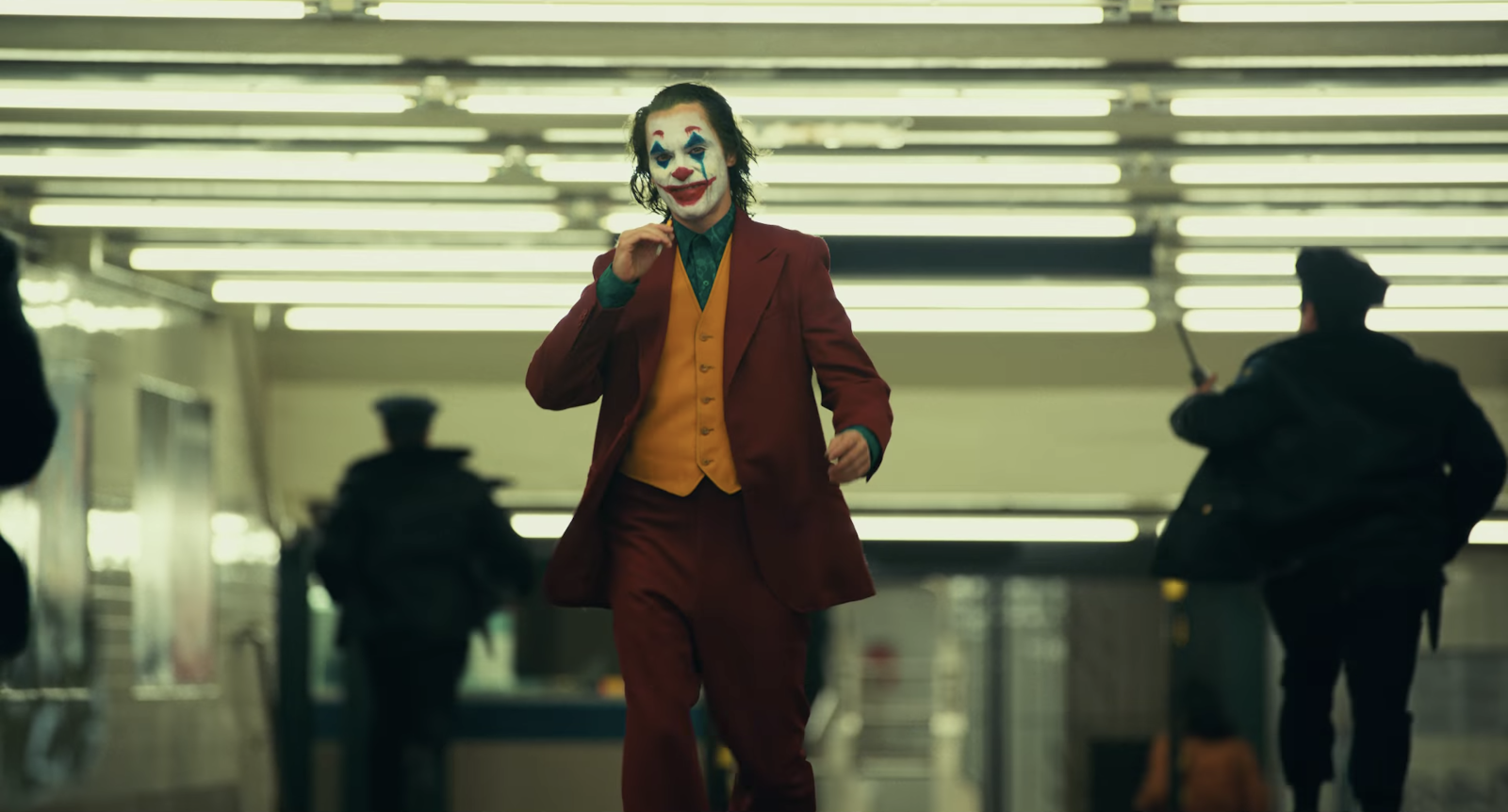
Groth’s team included Jeff Mee (first assistant editor), Ray Neopolitan (second assistant editor), and Thomas J. Cabela (visual effects editor). Dustin Wadsworth, dailies colorist, and Chris Zarcone, dailies technician, were also on hand throughout production.
During shooting, Groth had his assistants process dailies in groups and clips, marked by starts and stops for takes. Because he was working in Brooklyn during production, dailies were picked up from shoots in Manhattan every day, and eventually sent to a second assistant in Los Angeles to create and organize the bins.
Since the team was split between the Eastern and Pacific time zones, the Brooklyn team always had fresh dailies ready to go when they came in every morning after new footage had been shot. When Groth went through the footage, he watched preferred notes first, then everything else, backwards, pulling material into his timeline as he went along.
As he moved forward, he cut scenes in sequential order, so that there was a relatively complete version of the movie by the time he began collaborating in post-production with Phillips.

Over the course of the next seven months, Groth worked closely with Phillips to shape the film. Phillips, a writer-director, wanted to be as involved as possible as they worked through the arc of Joker’s character and Phoenix’s Oscar-nominated performance, something Groth has described as “an intricate puzzle.”
Ultimately, the pieces all fit together, creating a box office behemoth that earned 11 Oscar nominations.
Little Women
The third of this year’s nominees to shoot in 35mm film, Little Women cinematographer Yorick Le Saux used a similar setup as Once Upon a Time… in Hollywood. He chose Arricam LT and Arricam ST cameras and 35mm Kodak Vision3 500T 5219 for the 40-plus days of principal photography, and, like Once Upon a Time… in Hollywood, director Greta Gerwig’s celluloid footage required a special workflow.
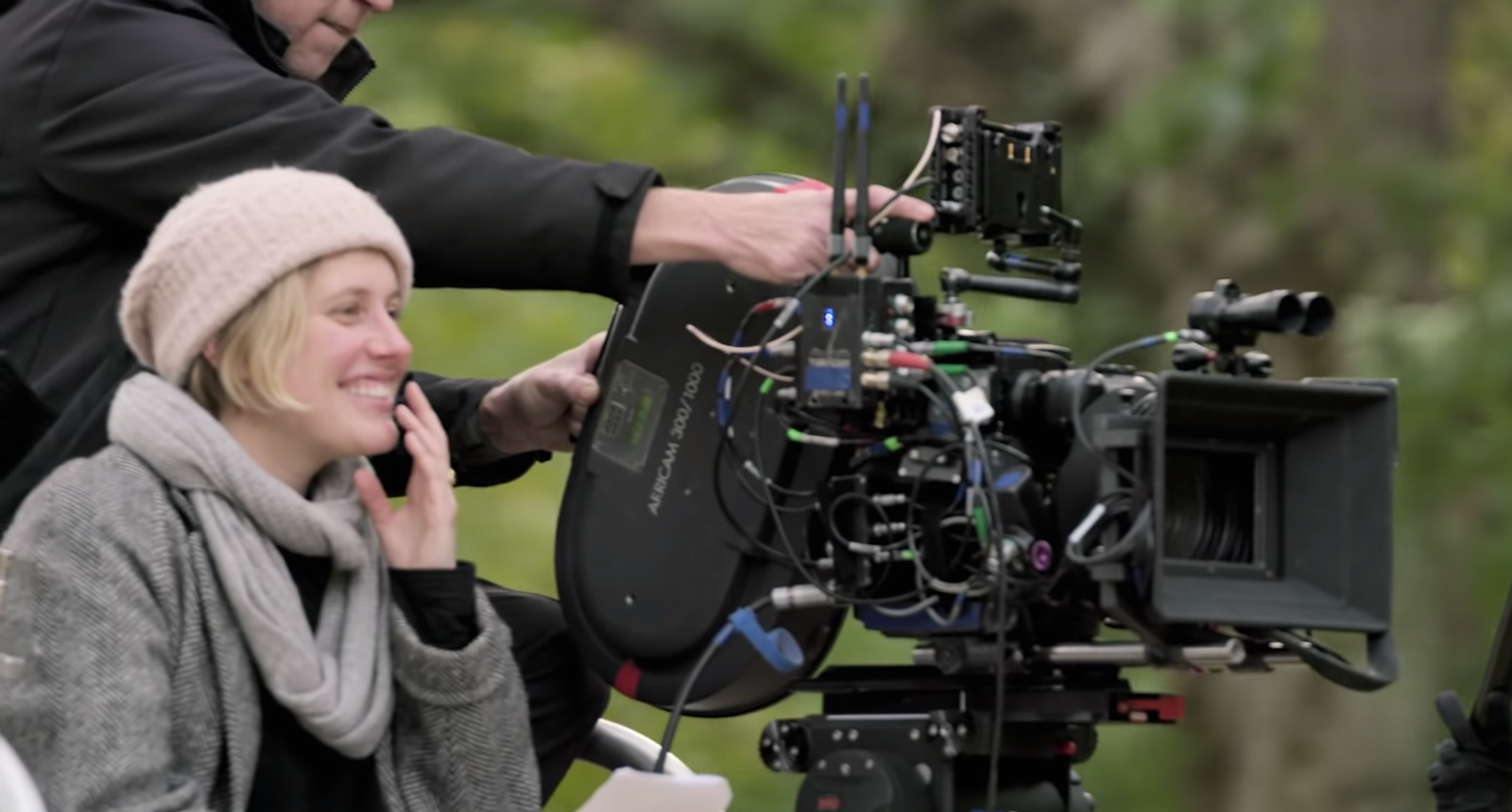
“Nightly film drops were shuttled from location in Massachusetts to Kodak in NYC,” explains first assistant editor, Nicholas Ramirez. It’s one of the challenges of working with film, which needs to be physically transported for processing.
According to lead editor, Nick Houy, “Once the film was almost lost in a blizzard on the highway, during shooting, from Boston to NY!”
When footage safely arrived? “It was processed at Kodak each morning, and the processed negative was shuttled to Deluxe NYC for 2K scans. The scans were shuttled to Harbor Picture Company for dailies grading, syncing, and general prep before finally being handed off to editorial in Avid media form.
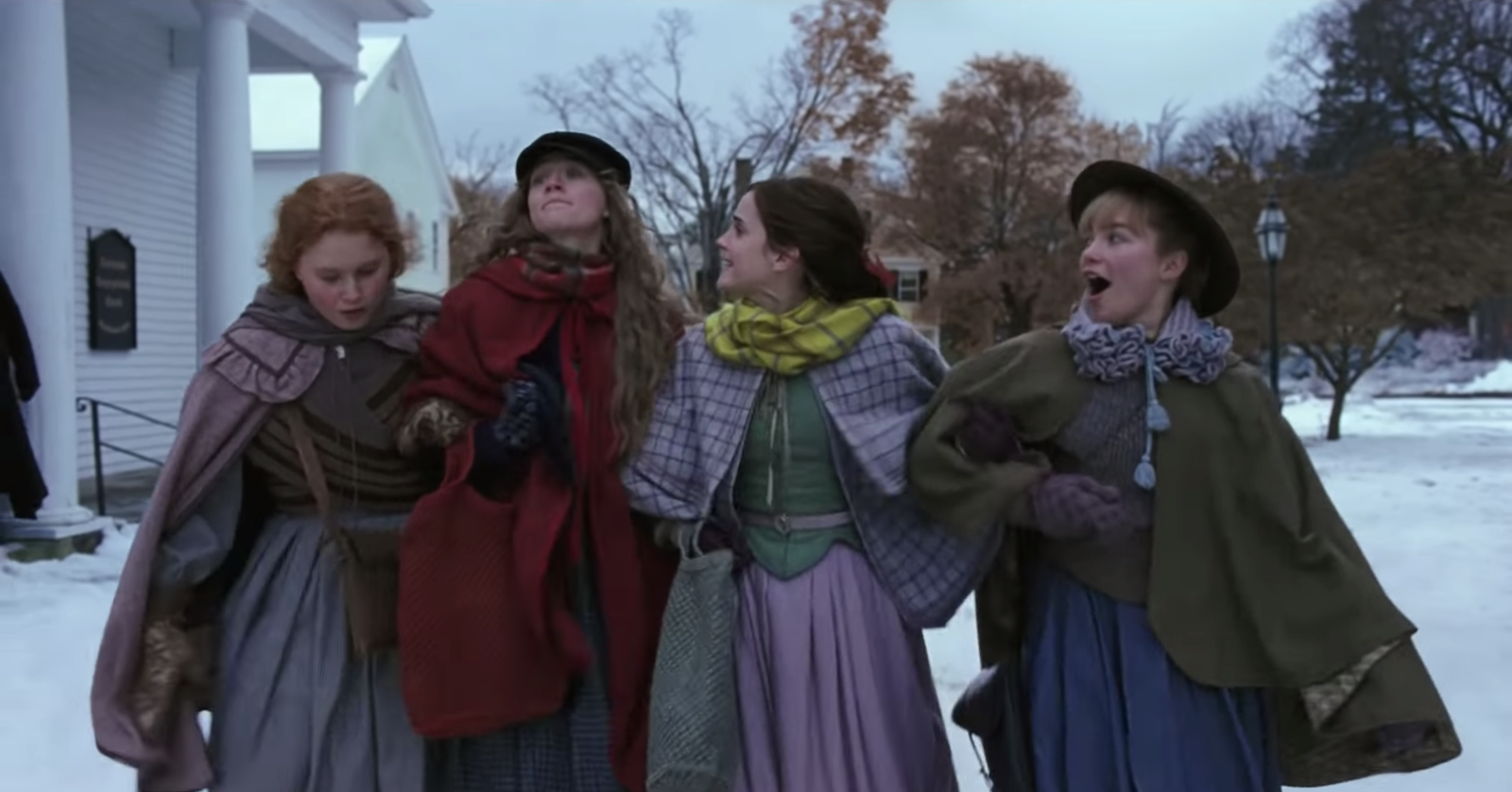
All in all, it was a two-day turnaround from set to edit,” says Ramirez. Screenings took place on the weekends at a location near the set on PIX.
Once production wrapped, Houy and his team cut on Avid in DNxHD115 at 1920×1080 at 24fps, using four Mac Pros running Avid, with Nexis and Isis shared storage. The editorial team was made up of Houy, Ramirez, an apprentice, and a VFX editor for part of the time.
The team needed approximately ten weeks for the director’s cut, followed by a series of test screenings and additional edit time from roughly April to July 2019, then some “proper finishing” happened between August October 2019. Once the picture was locked, it was rescanned by EFILM in LA at 4K, and conformed by Harbor Picture Company in New York City.
There were two big editorial challenges, according to Ramirez. The first was finding the perfect balance in the dual-timeline narrative that distinguishes this Little Women from other adaptations of the novel.
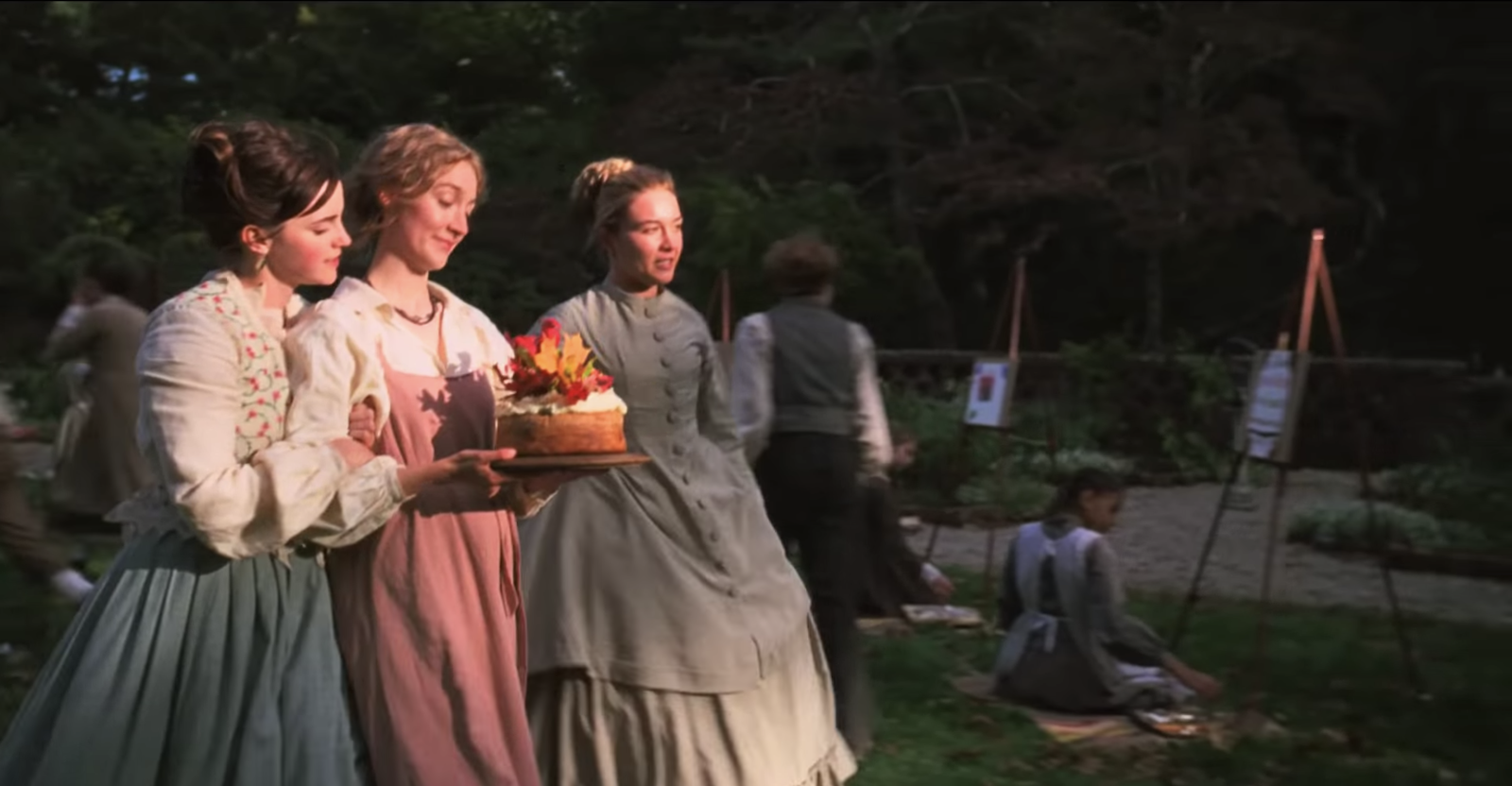
The second challenge was sound related. “Cutting and finessing the ADR and dialogue work offline, but also just the sheer amount of ADR we recorded throughout post that needed to be auditioned, tracked, and handled well into our final mix. The film often thrives on fast paced, overlapping dialogue, and the cast often spoke over one another, as Greta scripted and directed it to be. Naturally some of that needed some cleaning up, reconstructing, etc. to keep it all moving and flowing in a natural way.”
There was one more challenge that Ramirez didn’t mention—Gerwig’s pregnancy, which further compressed the editorial schedule. But with six Oscar nominations, two of them for the actors speaking those words, the editing team can take comfort in knowing that they more than overcame the challenges.
The Low Budget Social Statements
Last, but certainly not least, we get to the three films that were made for under $20 million.
While they may be competing against films with more than four times their budget, small size doesn’t mean small impact. Jojo Rabbit, Parasite, and Marriage Story all tackle big social issues (fascism, class inequities, and divorce) in ways that make them resonate at a high level.
Jojo Rabbit
Creating a Nazi satire is no easy feat, but (almost improbably) writer-director Taika Waititi succeeded well enough to produce an Oscar winner for Best Adapted Screenplay.
Principal photography on Jojo Rabbit took 40 days. As cinematographer Mihai Mălaimare Jr. spent his days shooting on the Arri Alexa Mini and Alexa SXT with ARRIRAW at 3.4K (3424×2202) throughout the Czech Republic, lead editor Tom Eagles (winner of this year’s ACE Eddie for Best Editing – Comedy) was headquartered from day one in Prague, away from the set so he could stay objective, to handle the dailies.
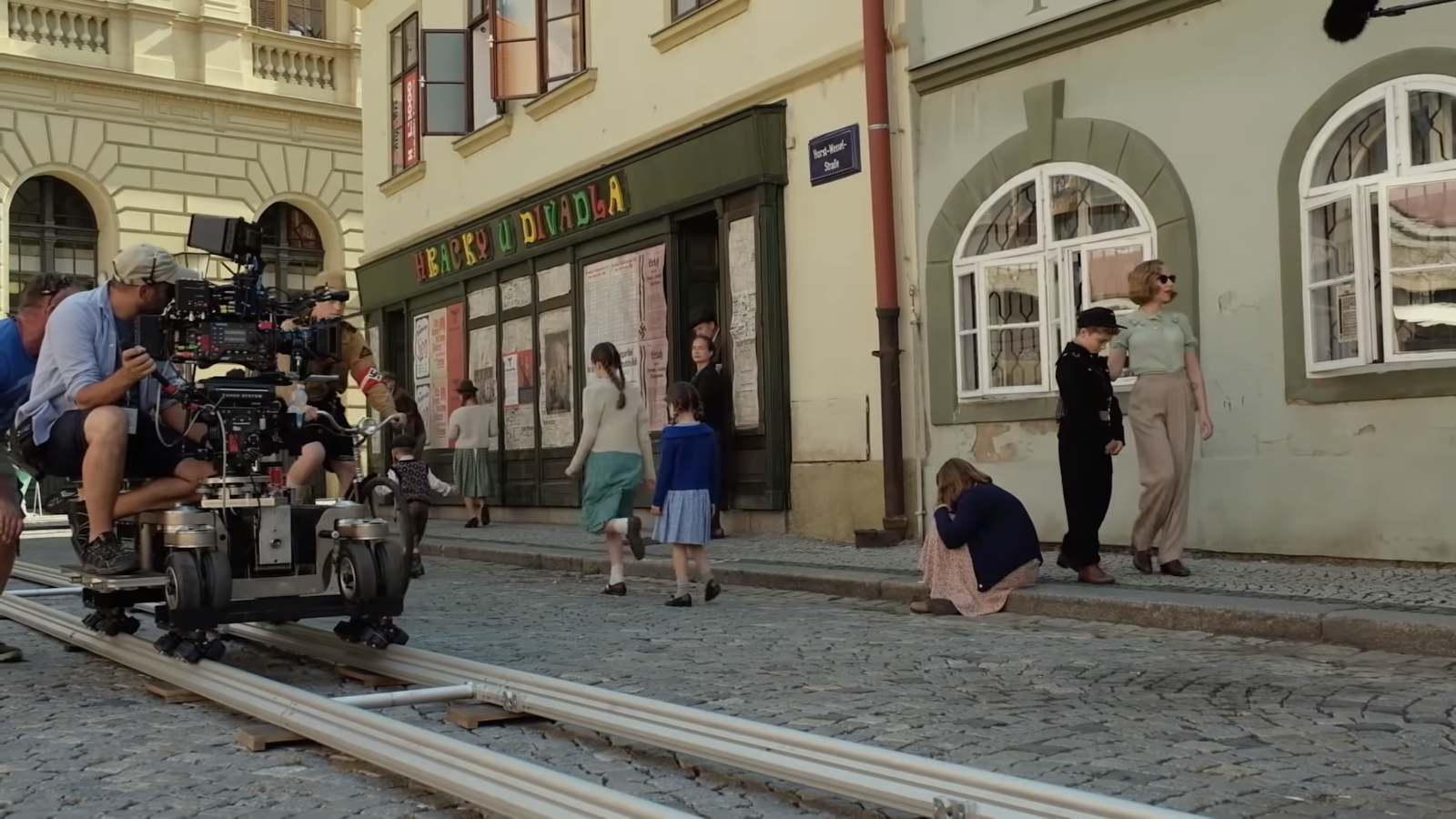
As they came in, he watched them from head to tail, letting his feelings guide him through the many, many takes Waititi and Mălaimare Jr. had shot.
According to first assistant Daniel Nussbaum, “The clips were organized like most shows in script order (in frame view) and usually over several bins (parts) based on how much footage there was for any given scene. Tom also likes to have the clips for each setup in a given scene colored a different color.
Once the show came to LA we had to convert the clips to work in a 3.1 (LCR) sound environment and used Avid ScriptSync to put the dailies in a scripted format, so that Tom would be able to jump through the various performances and ad libs when he was working with Taika, the director.”
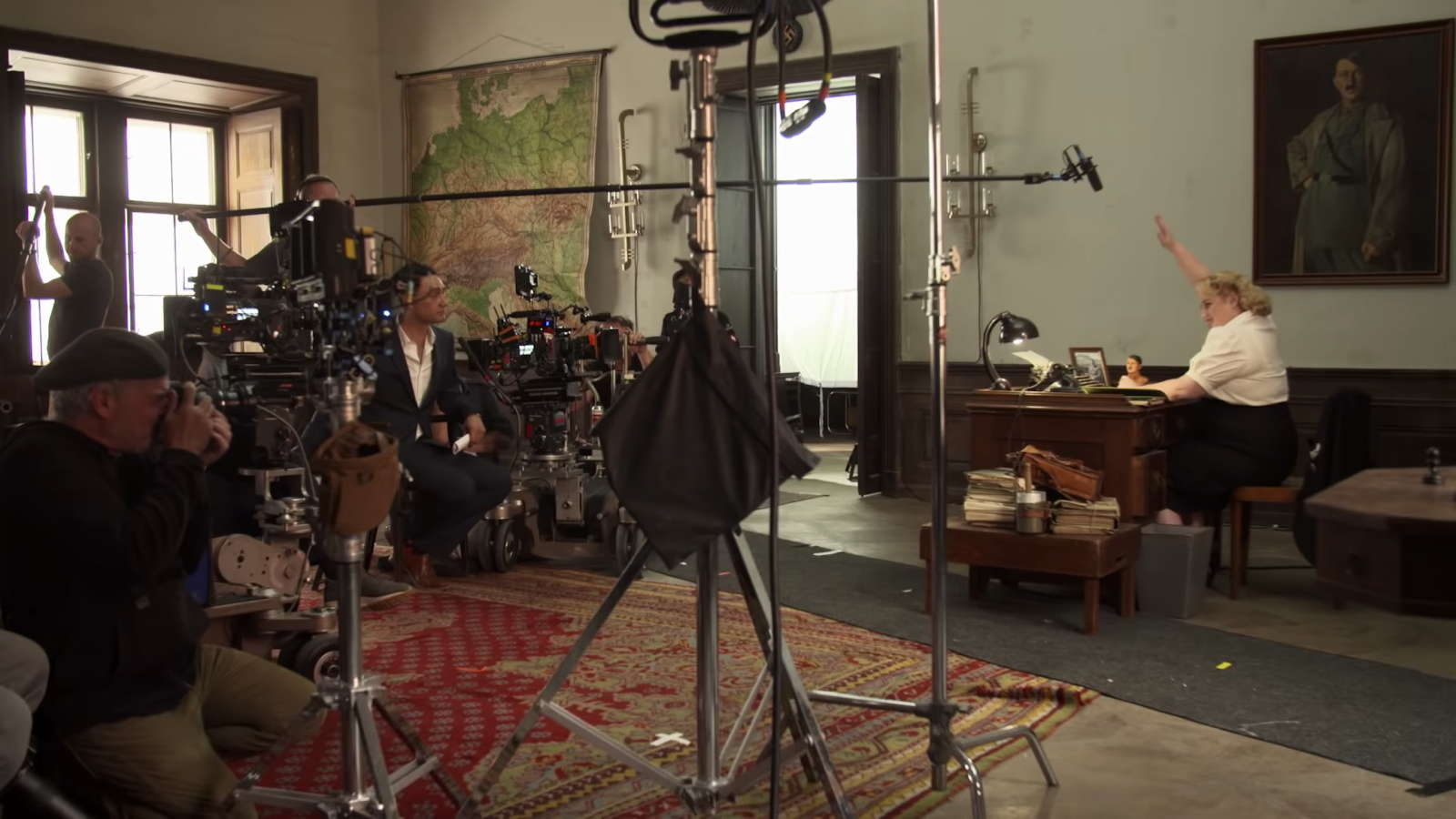
Avid’s PhraseFind also proved especially helpful for not just finding material that was improvised but also for swapping takes in and out as needed. Eagles never fully abandoned the dailies, however. Later in the editing process, he often returned to them as the movie took shape, just to see if anything stood out when reviewing them with a fresher eye.
Once production wrapped and post-production moved to Los Angeles, Waititi gave Eagles two weeks to create an assembly. Eagles used the first week to create what he terms a “compile” with every scene of the film in it. The second week he used for further refining.
Throughout his time working on the movie, he edited on Avid at DNx115 on a Mac Pro and a five-machine setup with an Avid Nitris and 20TB NEXIS storage. His team was also made up of two assistant editors, one PA, and two consulting editors.
They spent the first ten weeks in post-production on the director’s cut, and approximately 44 weeks in total with some breaks (including one during which consulting editor and longtime Waititi collaborator Yana Gorskaya, who was working on What We Do in the Shadows, swapped places with Tom for a couple of weeks). That can be normal for Waititi, who likes to take his time with edits so he can step back from the cut to get a fresh perspective.
Waititi collaborated closely with Eagles, but it’s not just their work together that shaped Jojo Rabbit. Waititi was a big fan of screening the movie frequently.
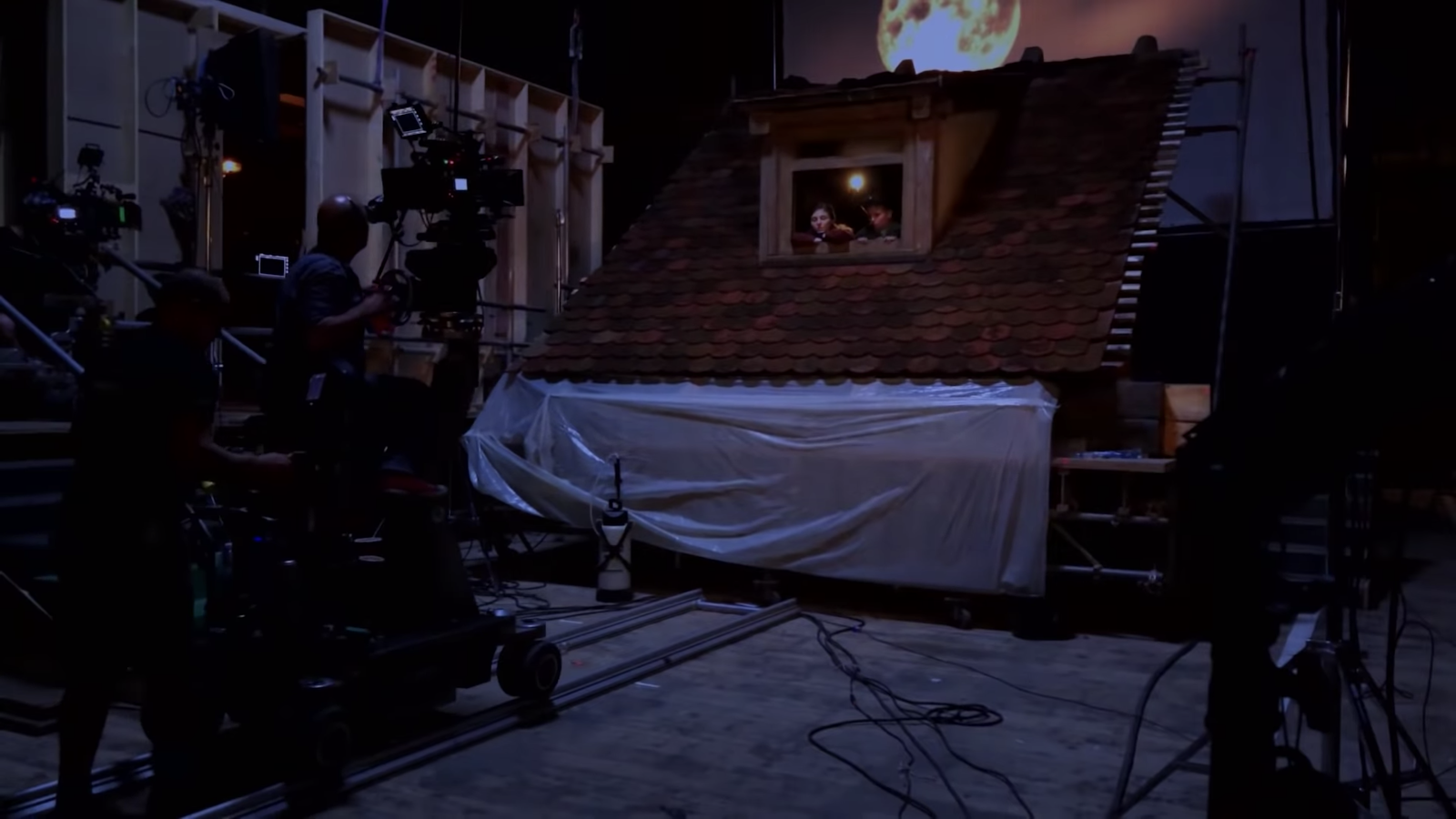
“Every time we changed anything significant with the movie we would screen—initially to a small group of friends of Taika’s and always new people—so there were people seeing it for the first time,” Eagles said.
Those screenings were especially vital for achieving the tonal balance that both Eagles and Waititi wanted for the movie. Even though there was enough footage to make Jojo Rabbit a beginning-to-end comedy, making the shift to drama work properly was vital to them.
The critical reception—including winning the People’s Choice Award at the Toronto International Film Festival—is proof they succeeded.
Marriage Story
In the seven years (and five films) that editor Jennifer Lame has worked with director Noah Baumbach, she has become key to his creative process—even before shooting has begun. And Marriage Story was no exception.
“I bring Jen in at the writing stage and she’ll give me ideas for what to cut or what to add. She was instrumental in helping me cut down the script before production,” Baumbach has said.
That reliance even extends into production, with the director often bringing her on set to consult, or talking to her on the way to, or from, work.
Like Once Upon a Time… in Hollywood and Little Women, Marriage Story was shot on 35mm film Kodak Vision3 200T 5213 and Vision3 500T 5219 by cinematographer Robbie Ryan, who used Arricam LT and Arricam ST cameras. They used a 1.66:1 aspect ratio to make the framing feel more intimate, as seeing closeups of the actors’ faces was important to feeling their reactions and emotions.
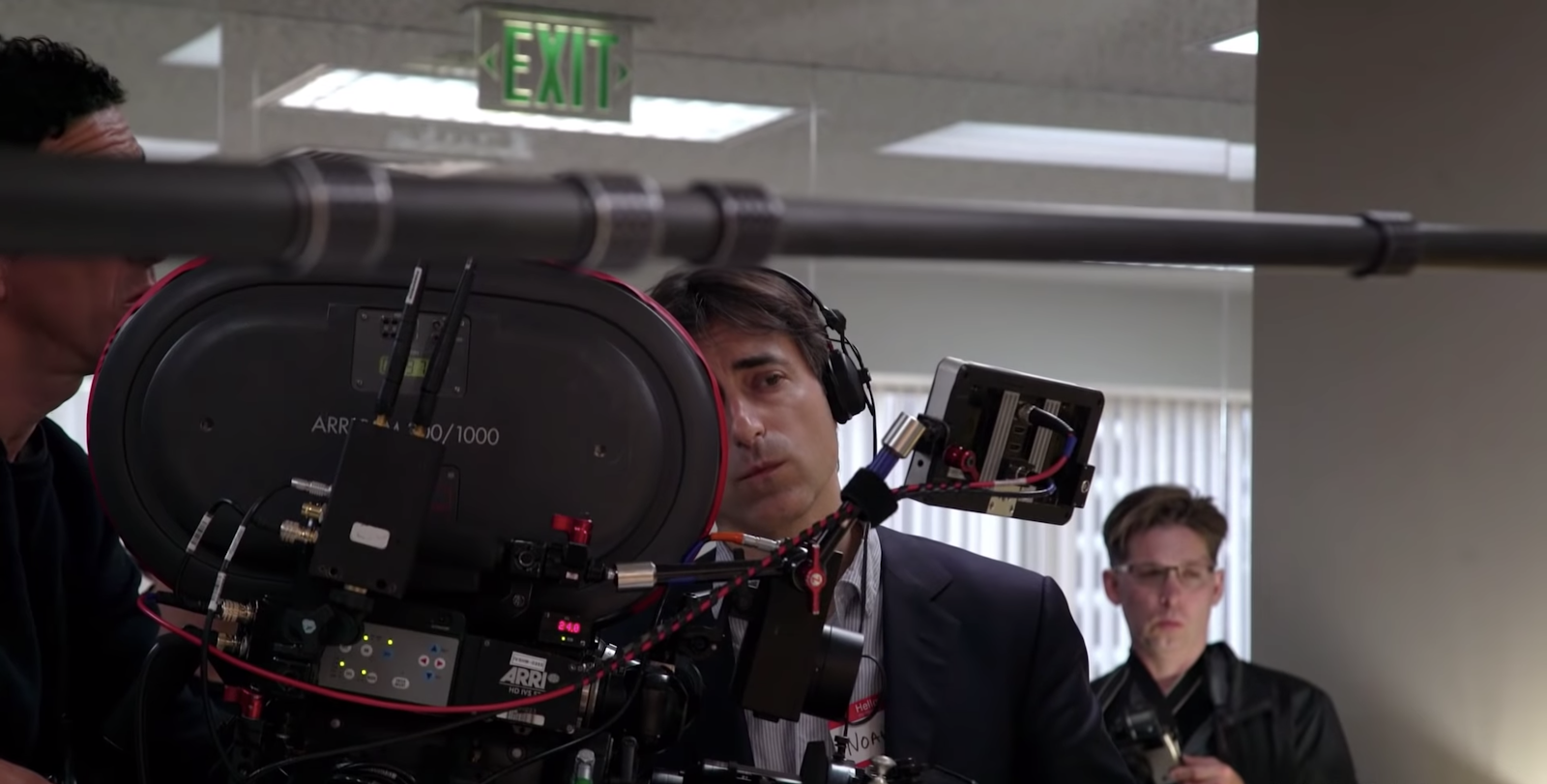
Throughout the 47 days of principal photography, the film was processed and dailies were handled at FotoKem in both Los Angeles and New York. And there was a lot of film to work with, since Baumbach likes to shoot a lot of takes. Because the movie was shot on film, the cutting room received H.264 files from PIX so Lame could get a quicker look at the dailies.
Editing on Avid at DNx36, the way Lame works through all that material is by creating what she and Baumbach calls “stacks,” which is how Lame organizes her bins. The way it looks and works?
“It’s a string of lines—every reading line by line horizontally—and then, when I like a performance, I lift it up to the next level and if I really love a performance I lift it up to the third level so that’s why it looks stacked,” Lame has explained. She’s floated the idea of using Avid’s Script Integration feature past Baumbach as an alternative, but he prefers being able to see the timeline, so “stacks” remain his, and her, process.
Once they start editing, they use their deep knowledge of the characters and story (formed over months) to intuit which takes are the best.
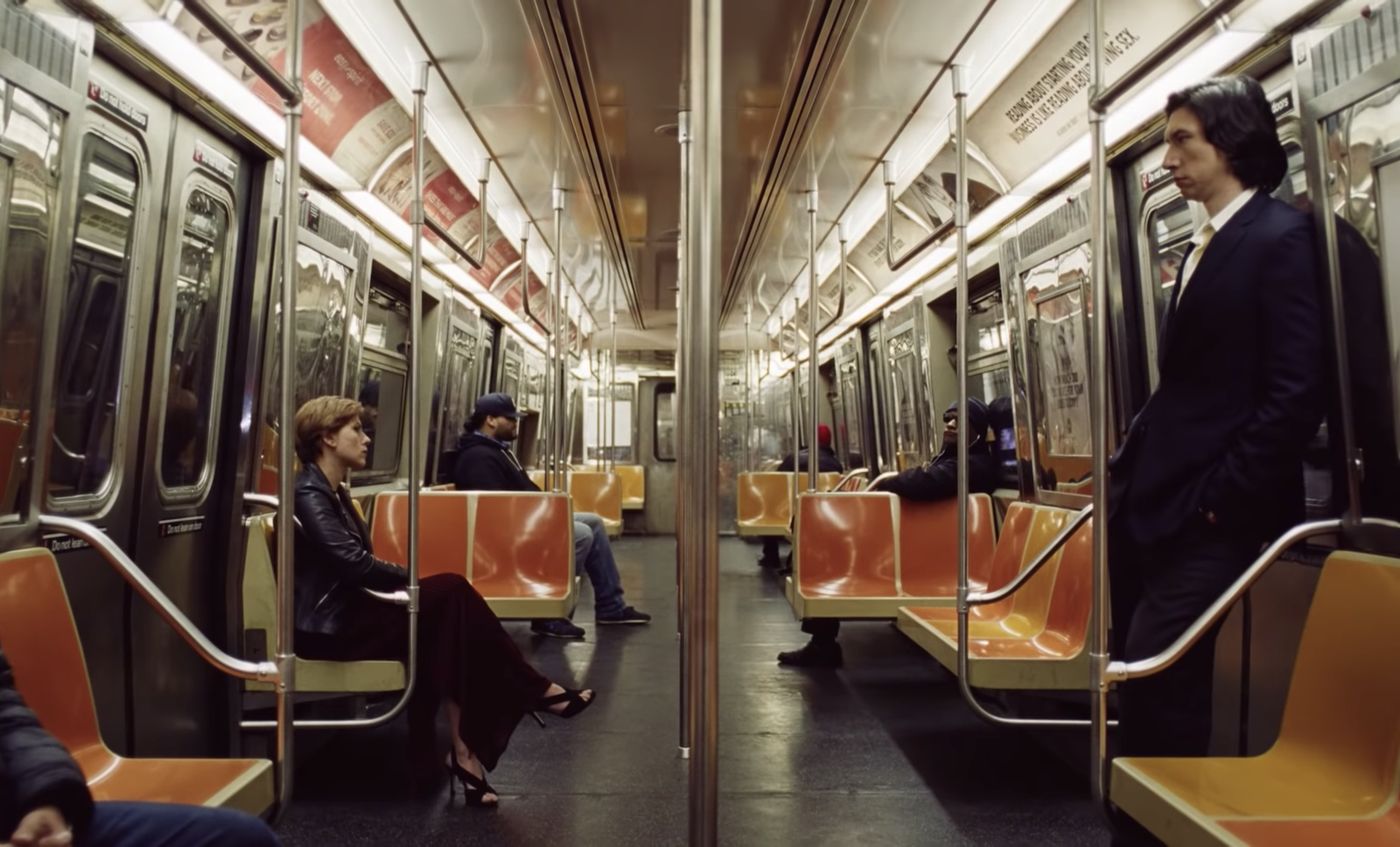
Baumbach is often content to let Lame work on material on her own, as well. As she works, she’s a particular fan of an “old school mouse” but also of Avid’s marker system, which was appealing to her as a former Final Cut editor.
Much has been said about the way Marriage Story finds a balance between Adam Driver and Scarlett Johansson’s characters, never favoring one’s perspective over the other.
Part of that was Lame and Baumbach’s willingness to take their time to get that right: it isn’t uncommon for them to let a cut sit for weeks, even months, before returning to it with a fresh perspective. Clearly, that time paid off, as Marriage Story was one of the most acclaimed movies of 2019.
Parasite
Among auteurs, there are some who have more precise ways of working than others. And no director works more precisely than Bong Joon Ho.
The success of the South Korean film has broken international box office records and surprised everyone, not the least director Bong Joon Ho, whose film swept the awards season by winning the Palme d’ Or at Cannes and the Oscars with Best Original Screenplay, Best International Film, Best Director, and Best Picture.
As Parasite lead editor Jinmo Yang revealed to us, Bong shoots no masters and no coverage. That’s because he knows in advance how the film should go together. Which is why Yang (or, in this case, his assistant) is on set with Bong during production.
Having previously worked with Bong on Snowpiercer and Okja, Yang has a sense of where the cuts will happen—a result of studying Bong’s detailed storyboards, which serve as the roadmap for every setup.
By using footage from the video tap, whether Yang himself or his assistant is on the set, they’re able to quickly show Bong when they have a take that works.
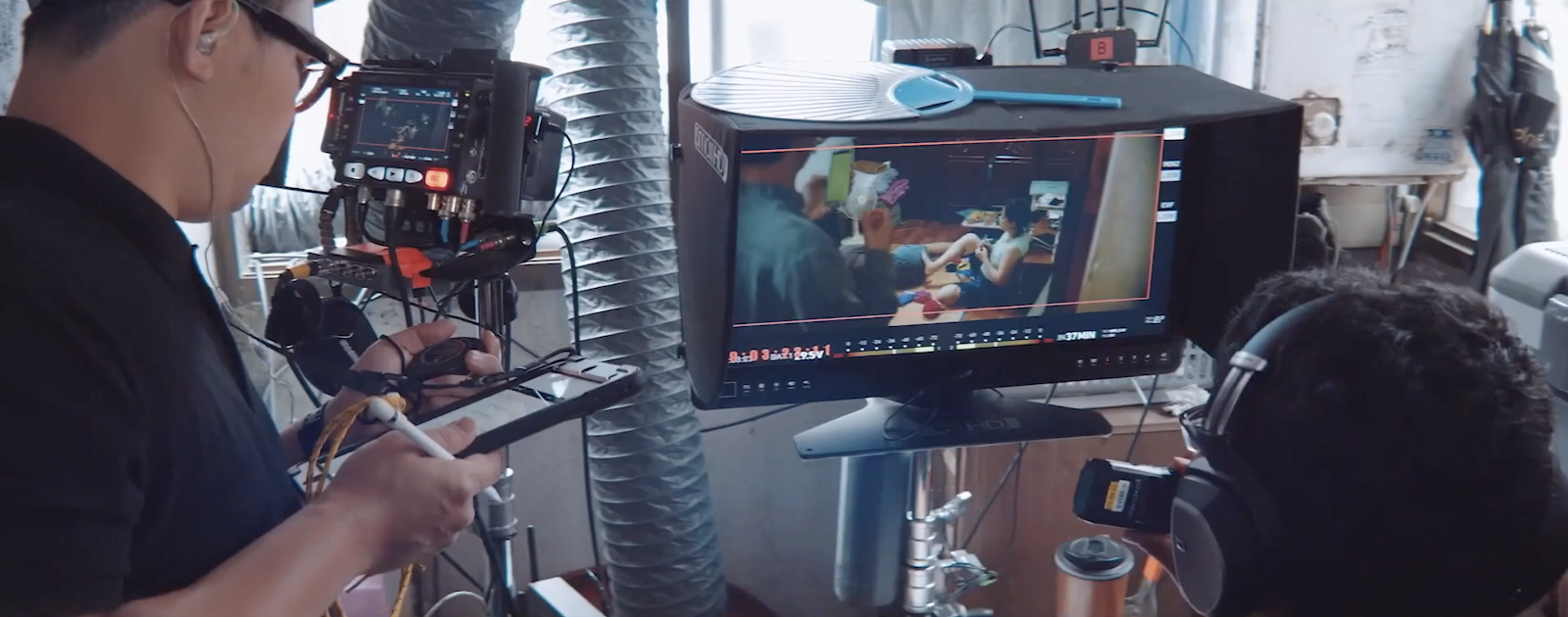
“He’ll look at the takes to see if he has everything he needs in one take—the right timing, the right action, the right camera angle—which tends to be in one of the later takes,” Yang says.
Once principal photography has wrapped, the fine-tuning begins in the edit suite, where Bong and Yang work closely to shape the rhythm of the film.
“When we’re working together in the edit suite, he may prefer one actor’s take from an earlier performance because he likes the rawness or the freshness,” says Yang. It’s part of what has caused Yang to devise his method of “stitching” together different takes of the same scene as an invisible visual effects shot.
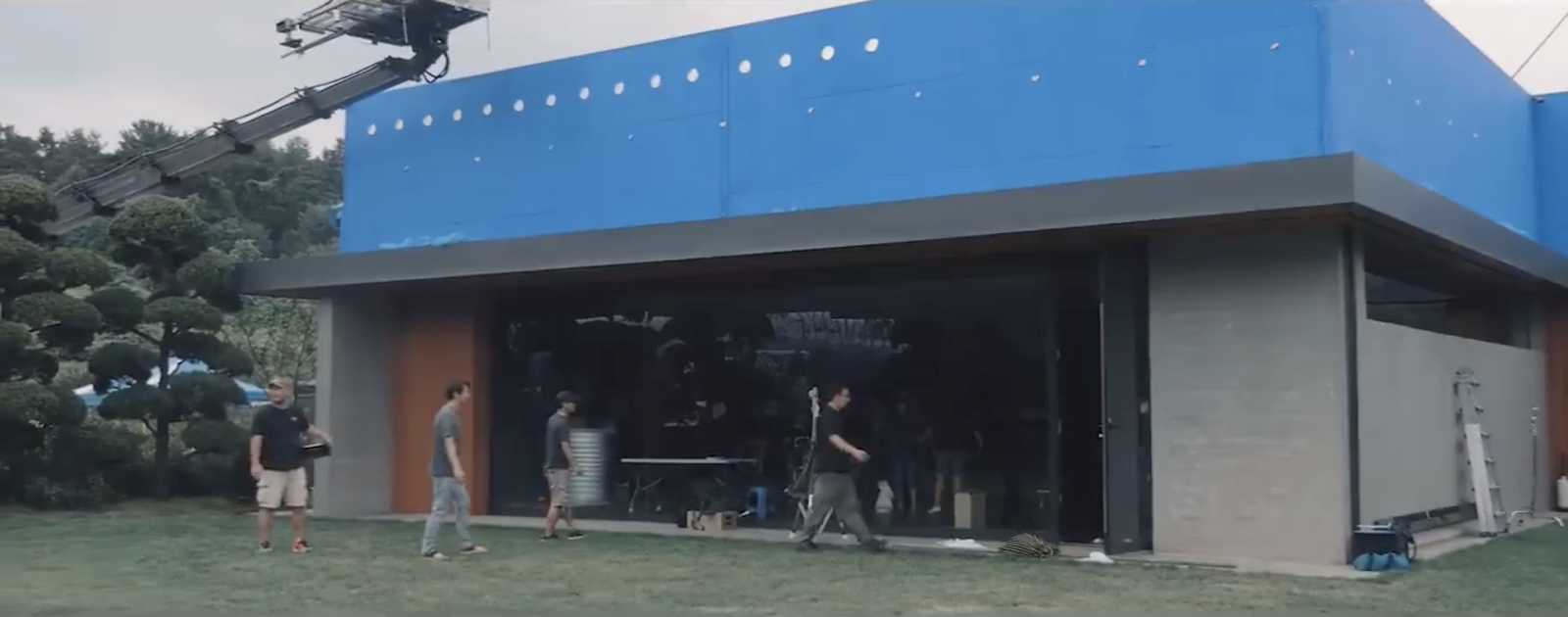
How does he do it? On Final Cut Pro 7 using a Thunderbolt local hard drive, and After Effects for VFX comps.
“Despite FCP 7’s age, it was more than capable of handling ProRes HD proxies of the Alexa 65 masters, with After Effects alongside for timing and pre-visualization of the numerous invisible VFX shots,” he says.
As is the case with Thelma Schoonmaker, the artist, not the tools, make the film.
The result is a seamlessly interwoven, Oscar-winning masterpiece, using the multiple characters who become intertwined in one another’s lives as the representations of the class struggle in modern society.
Community favorites
Since we published our first Oscar’s workflow breakdown in 2018, this annual publication has excited and engaged the post-production community. Clearly, we all love to see how the top talent in the industry practices our craft, and it’s an excellent opportunity to learn from the experts and improve our own filmmaking skills.
But it’s also a wonderful opportunity to reflect on which films over the last year had the biggest impact on us as storytellers, and to make predictions for who will take home a golden statue.
That’s why we reached out to the working professionals at r/editors, r/aftereffects, and the Blue Collar Post Collective to hear which films from the last year impressed them the most. Not all their picks made it to the Oscars’ stage, but each of these films made an impact on the filmmaking community. We had a diverse collection of submissions, and we’ve included a few of our favorites here.
Parasite
Just like in Hollywood, this year’s Best Picture winner scored praise from many of those who submitted their picks.
The film’s pacing, cinematography, and visualized on-screen tension inspired and fascinated many of our community members.
“The peach montage is perfection, truly incredible.” said one lead editor. “The pacing, storytelling, and emotion of the film is exemplified through the editing, and it’s amazing.”
“Parasite had the best editing, bar none. There’s a great rhythm to the whole movie, in the way the camera moves, the words are spoken, and how the editing contributes to that,” one VFX artist said.
1917
Of course, the masterful work of Sam Mendes, Roger Deakins, and Lee Smith left an indelible mark on many of the post pros who wrote in. The obvious point of praise was the single-take storytelling.
“It is no small feat to pull off a feature-length oner. Even with intense planning and motion control cameras, making everything a pixel-perfect match frame and hiding every cut and composite is insane,” one editor said—and many others echoed.
Several members also noted the blending of editorial and VFX that gave the film such a unique style. “Invisible editing is the hardest kind of editing. Most editors aren’t used to that, and that’s why it’s so impressive.”
Marriage Story
Netflix’s drama Marriage Story was also a favorite among non-voting members of the community, with several submissions praising the story’s emotional intensity.
“Family dramas are such a delicate balance, and Marriage Story in particular had so much emotional weight riding on a few cuts. The humor, the world building, the intimacy of the relationship, and the universality of the despair throughout were masterfully and subtly created in the edit as much as in the performance.”
And the work of editor Jennifer Lame drew particular attention.
“I can’t think of many other films, this year or at all, where the editor had to walk such a tightrope, balancing laugh-out-loud comedy and crying-actual-tears drama. Lame really managed an incredible feat, making sure the audience was able to empathize with both Driver’s and Johannssen’s characters. Convincing viewers to see multiple perspectives in one story is a major editorial accomplishment.”
Apollo 11
Other than the Oscar nominees, BAFTA award-winning Apollo 11 garnered the most community submissions for best editing.
The most common praise was the film’s exclusive use of original material in the editorial, and the documentary’s eschewing of the traditional interview-driven story.
“Very rarely have I seen a documentary told so well, entirely out of found materials. No talking head interviews, just pure dramatic storytelling with contemporaneous source material.”
“It was a master class in tension (even though we know how it sorts out) and creativity. The pace setting with just archival film and no narration is amazing,” said one documentary filmmaker.
Off-screen politics
There is much more to the Oscars than the technical stats and budget numbers. This year, as in years past, the Oscar nominees also yielded cultural commentary—off screen.
A step backward for diversity
Last year we may have celebrated the diversity represented by the 2019 nominees, encouraged by the Academy’s efforts to expand the inclusivity of its membership by inviting 842 new members from 59 countries, of whom 50 percent were female and 29 percent were people of color. But despite that, the nominees slid back into #OscarsSoWhite (and #SoMale) territory.
Only two of the nine films (Bong Joon Ho’s Parasite and Greta Gerwig’s Little Women) feature non-white or non-male leads, subject matter, and even above-the-line filmmakers.
Two of the films (The Irishman and Marriage Story) were edited by women, but nonetheless, this year’s representation was a letdown given the signs of progress shown last year.
Jordan Peele’s inventive and original Us was snubbed for Best Original Screenplay along with Lupita Nyong’o for Best Actress. Lulu Wang’s The Farewell received exactly no nominations. Neither did Dolemite is my Name. The reasons? We’ll never really know.
The wrap
Still, if the motivation for making motion pictures was solely for awards’ recognition, a lot of what makes our industry an industry wouldn’t exist.
Lucky for us, storytellers live to tell stories. Creative craftspeople live to bring forth their visions. Even all the behind-the-scenes “non-creative” contributors do what they do for love of the art form.
As always, we at Frame.io remain grateful to all of them for doing what they do, and for inspiring us to do what we do in support of their efforts. And to all of you reading this article, we hope you’re inspired, too.
Special thanks
Thanks to the following people who shared production details about these fantastic films: Jinmo Yang, Jeff Groth, Chris Tonik, Nick Houy, Nicholas Ramirez, Pearce Roemer, Daniel M. Nussbaum, Martin Hubacek, and Shelby Hall.
A special thank you to the members of the Editors subreddit (r/editors), the After Effects subreddit (r/editors), and the Blue Collar Post Collective who submitted best editing picks and predictions. All three of these communities are essential resources for creative, technical, and industry insights, and we value them as colleagues and supporters. Check them out.
And thank you to our contributing author, Lisa McNamara, for researching these workflows and interviewing the crews!

